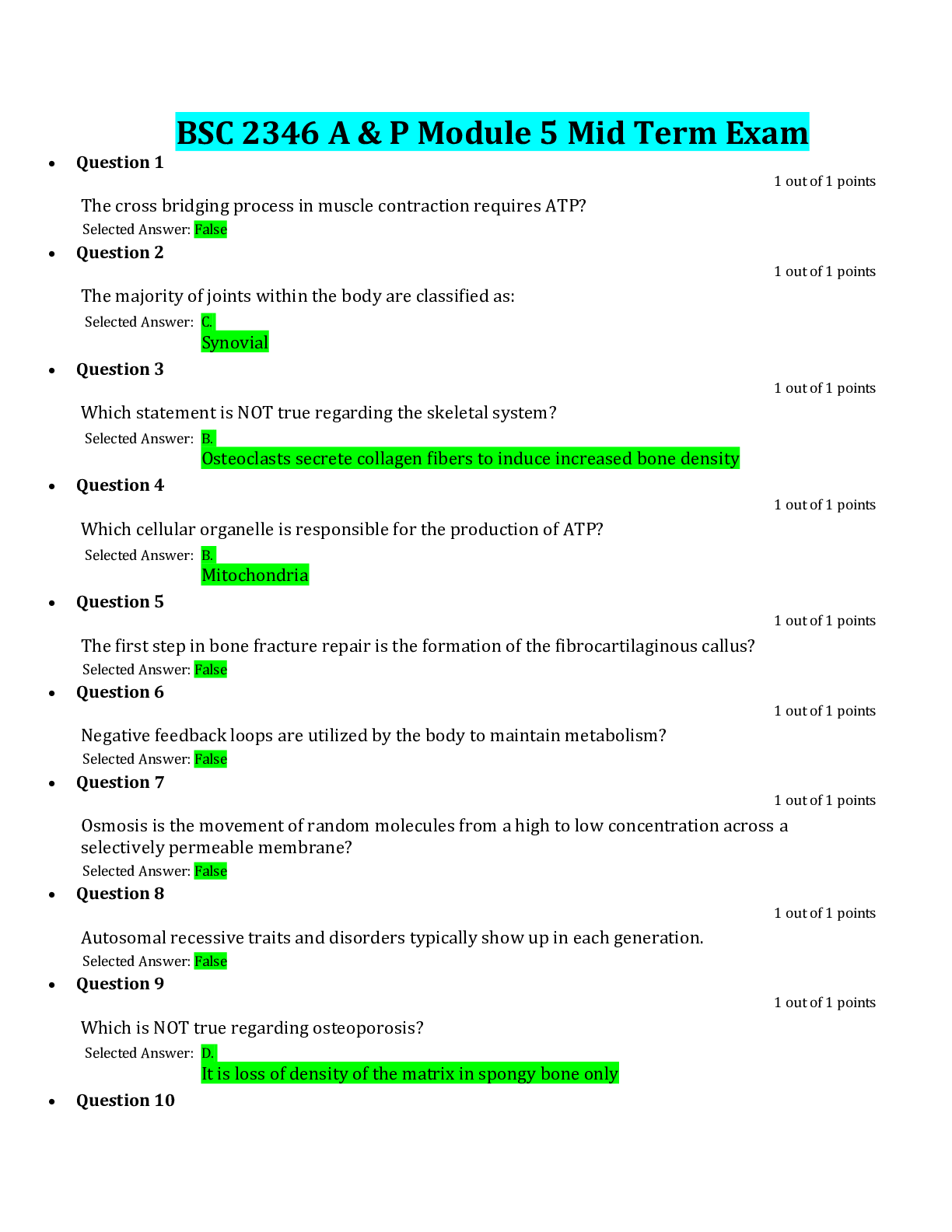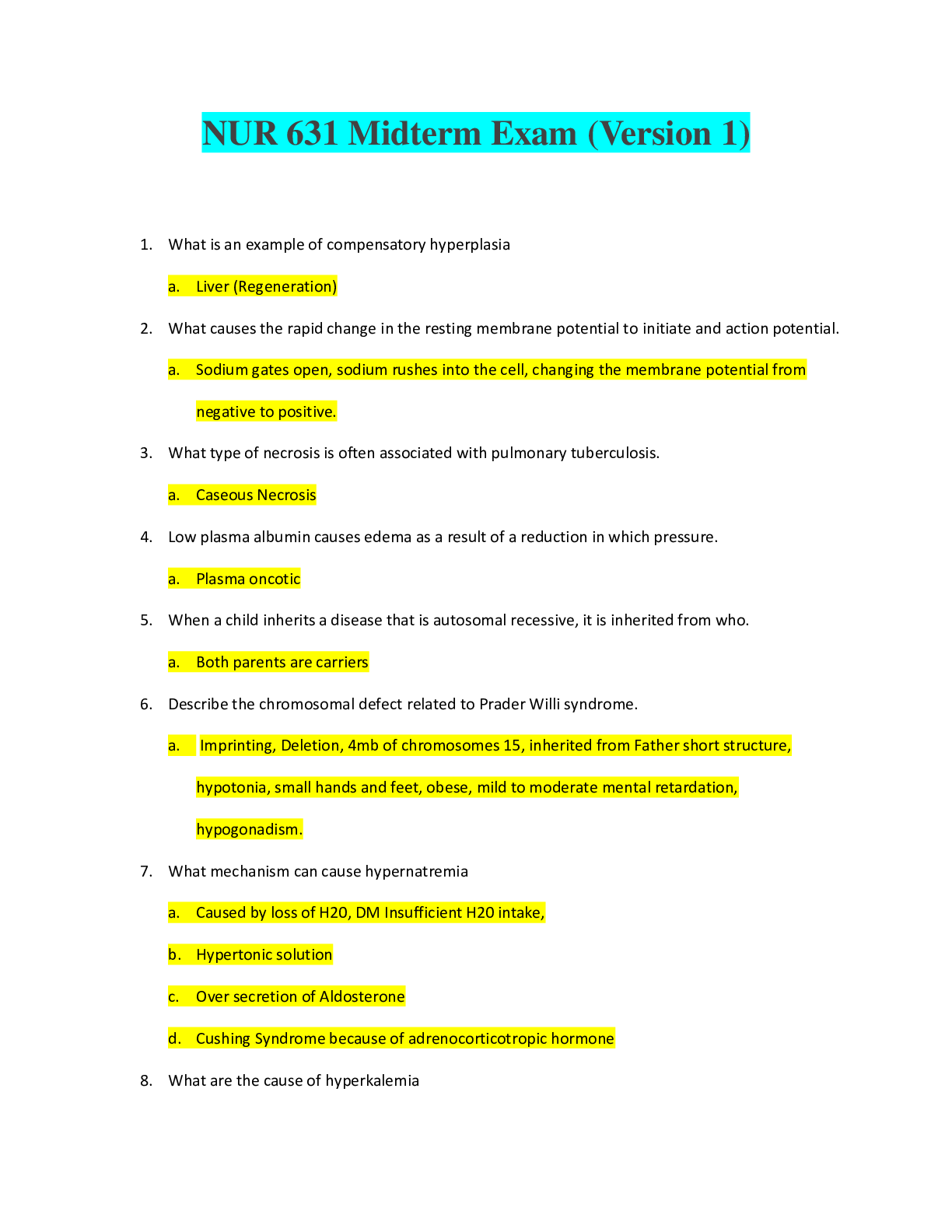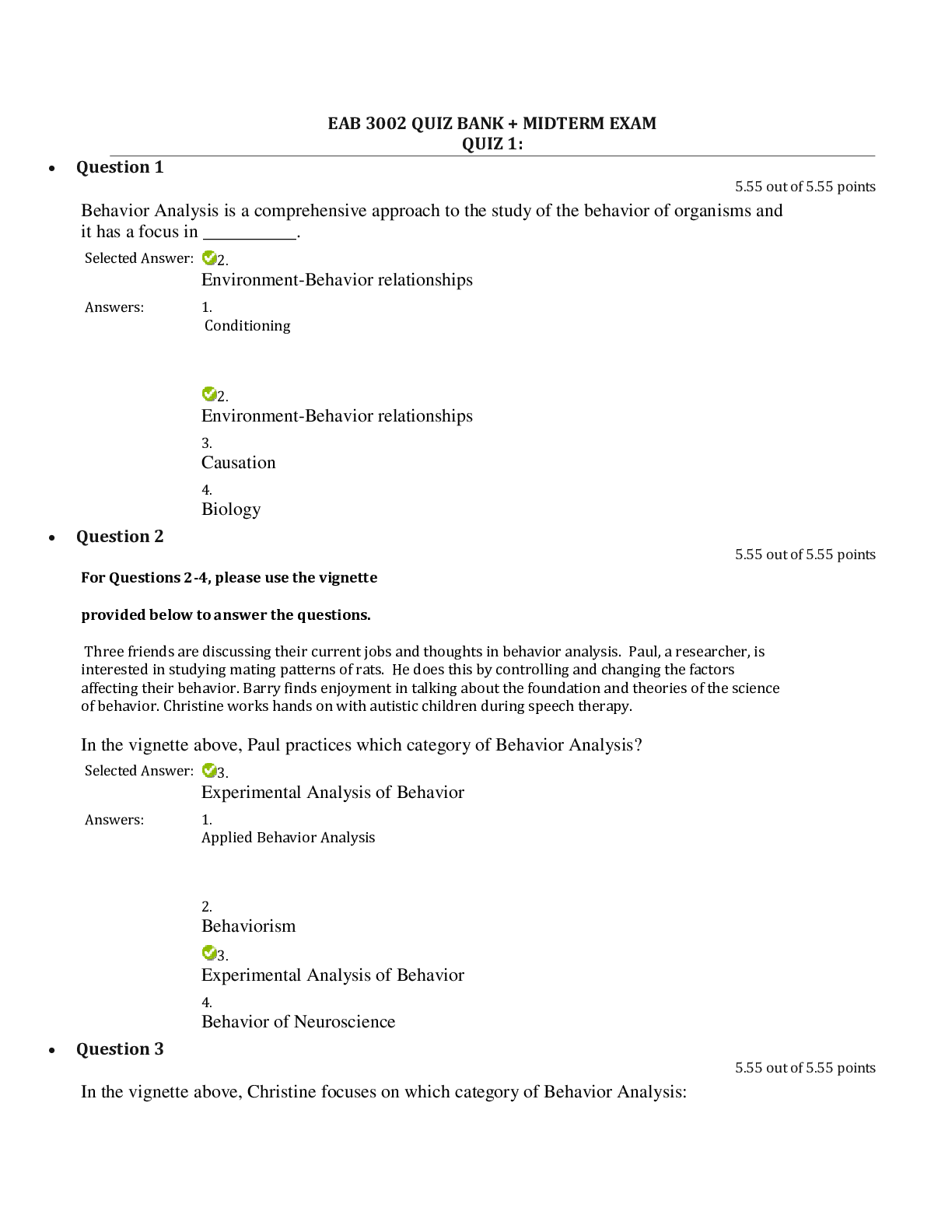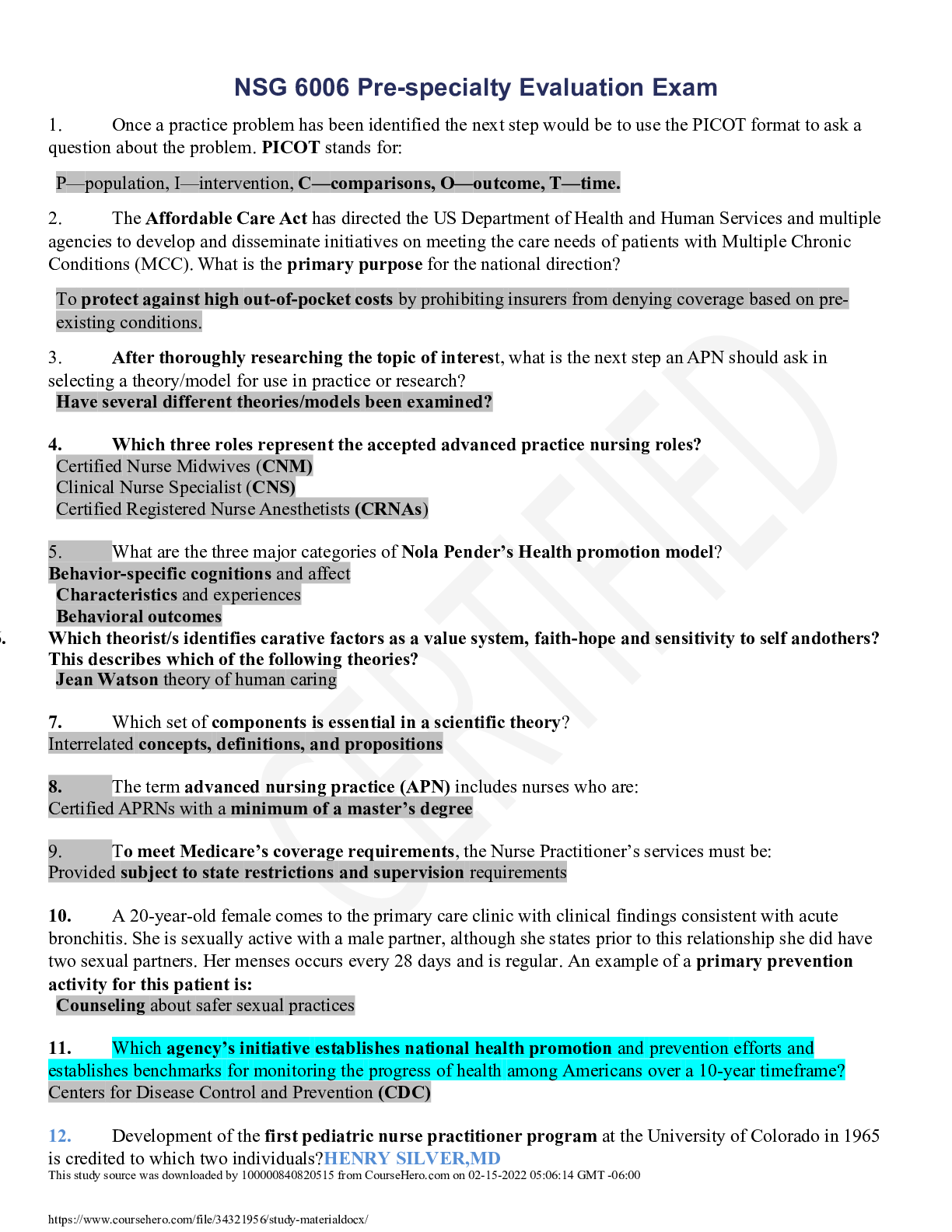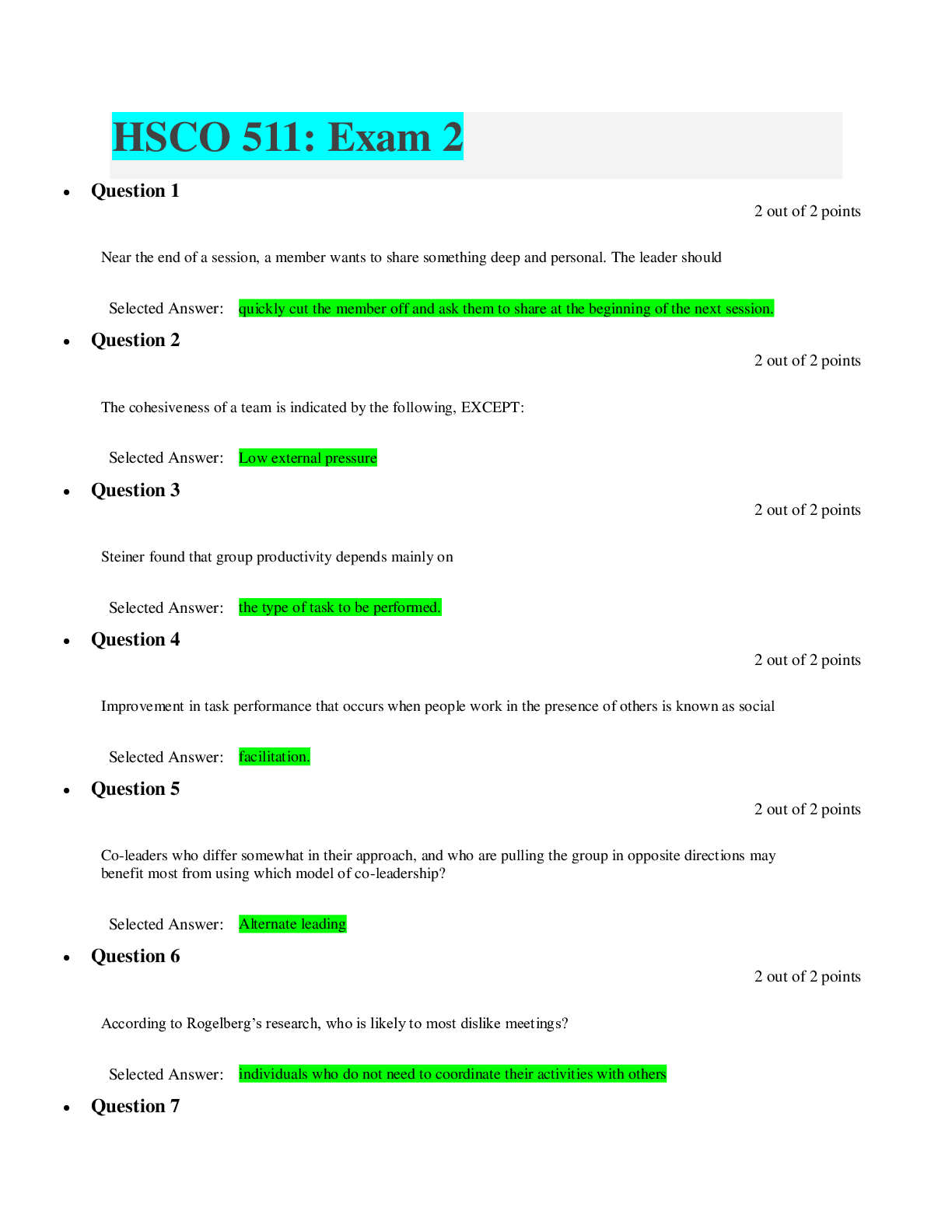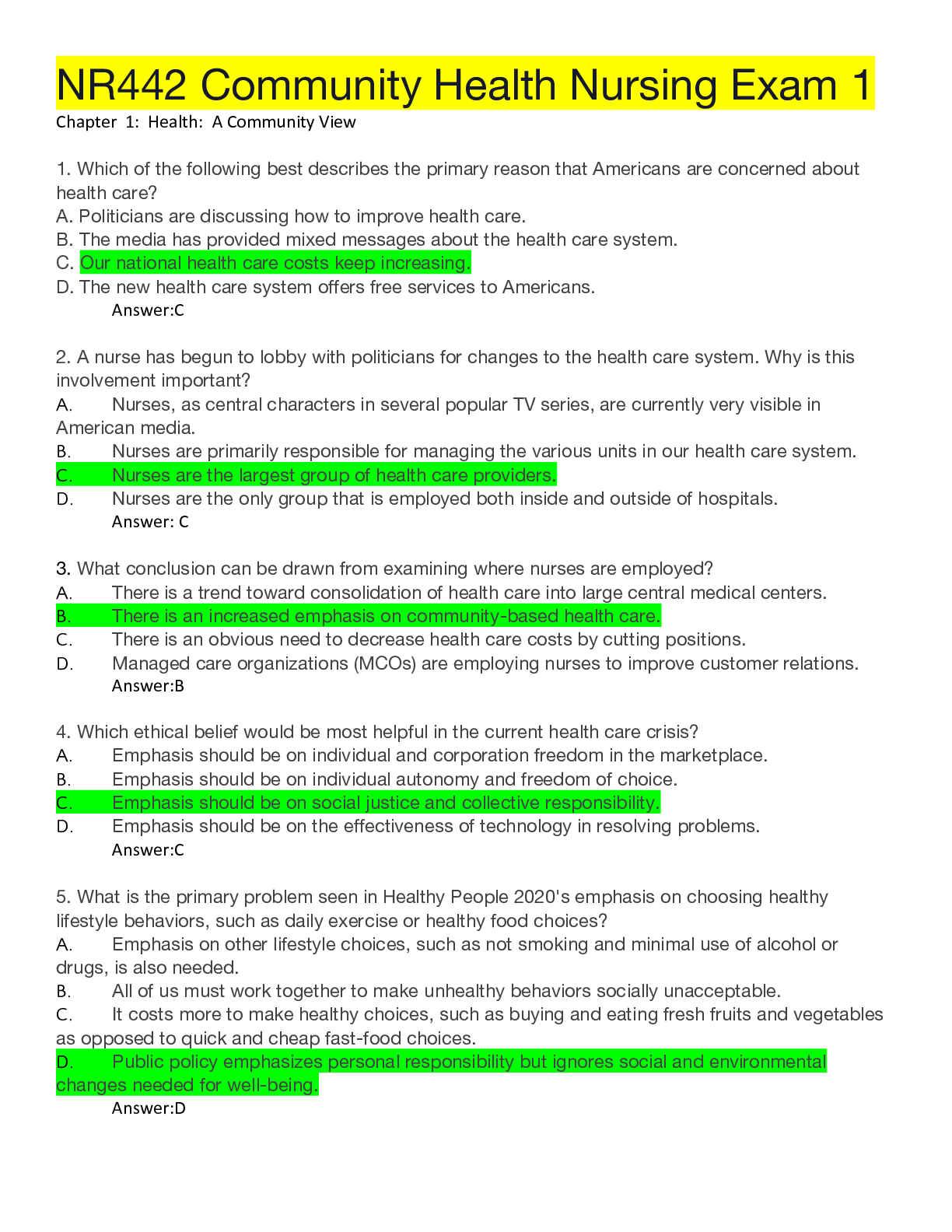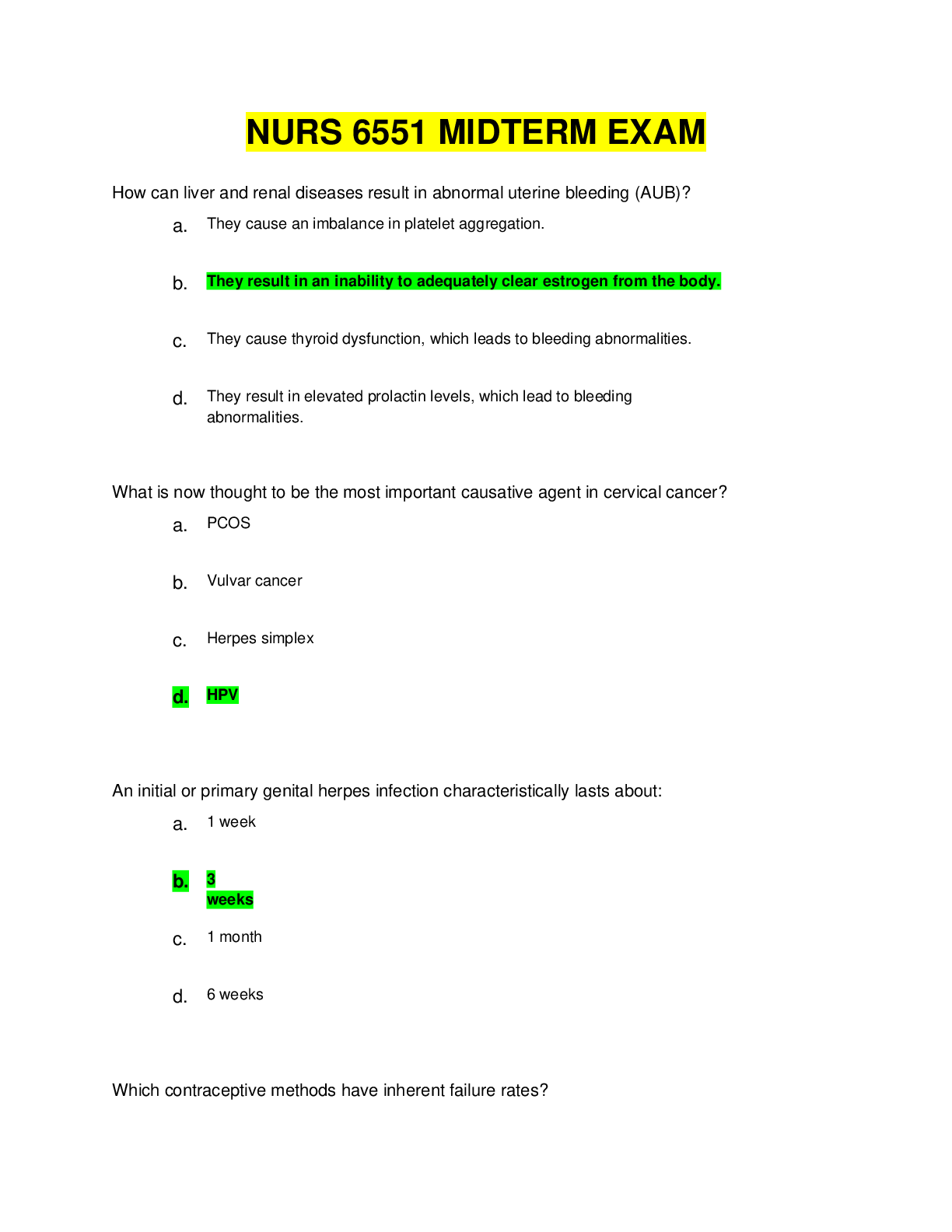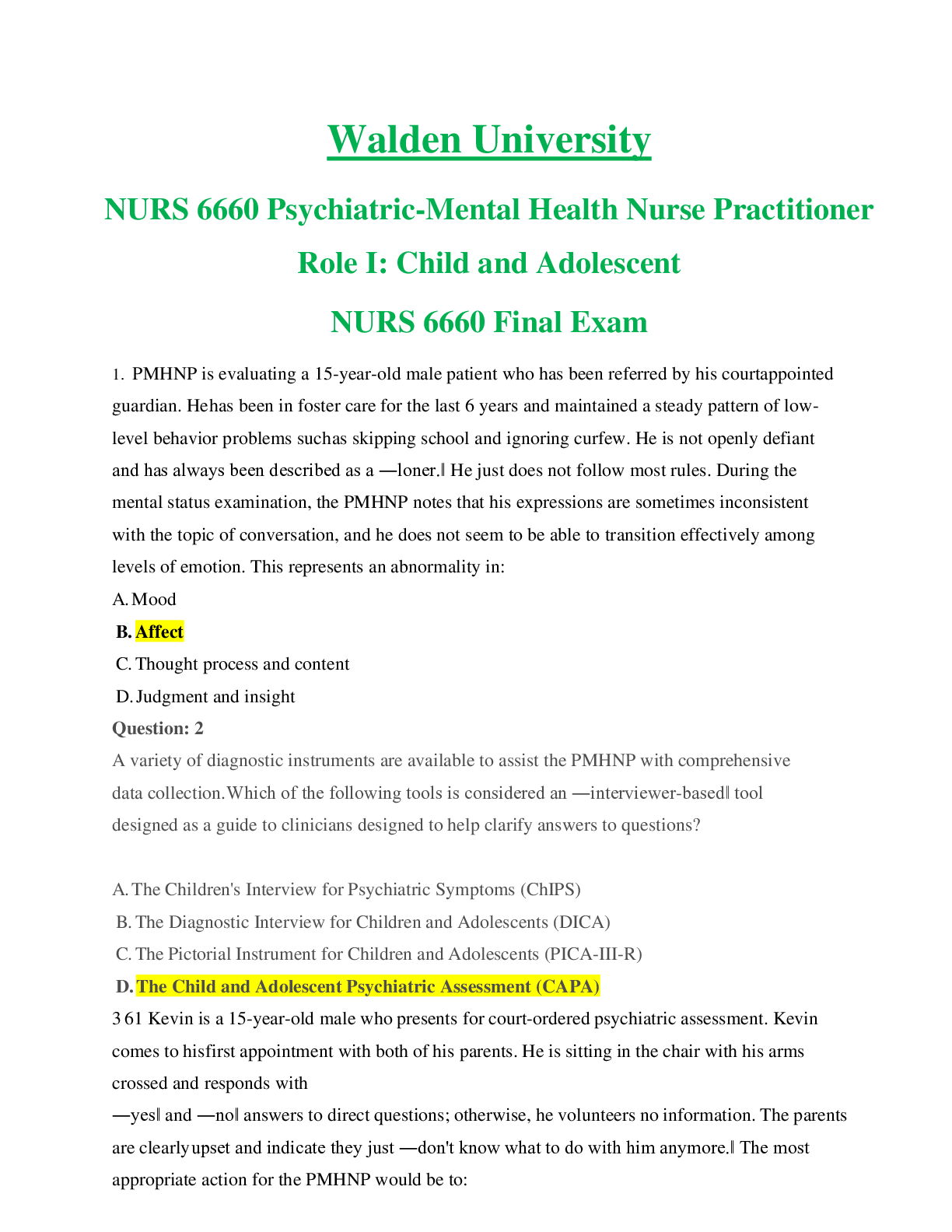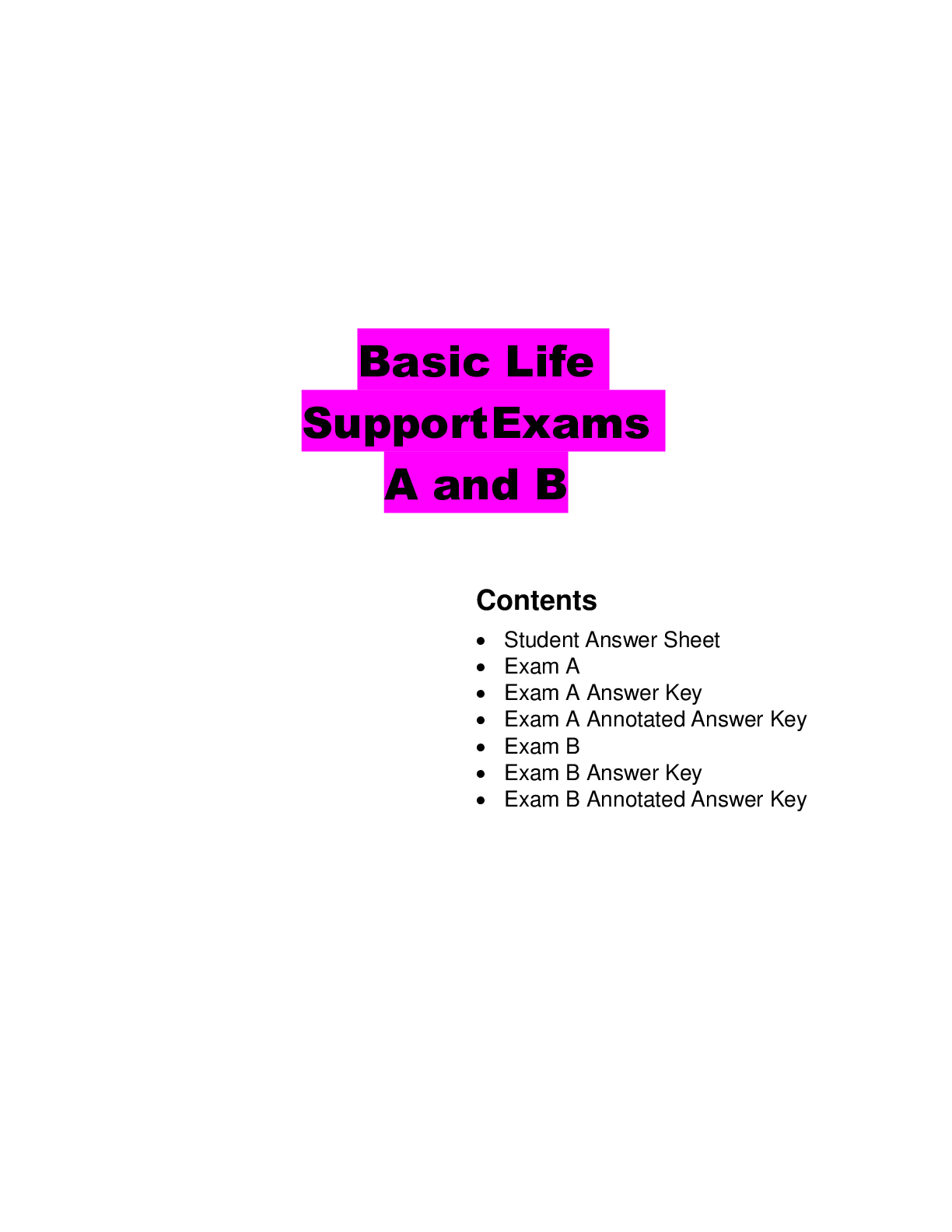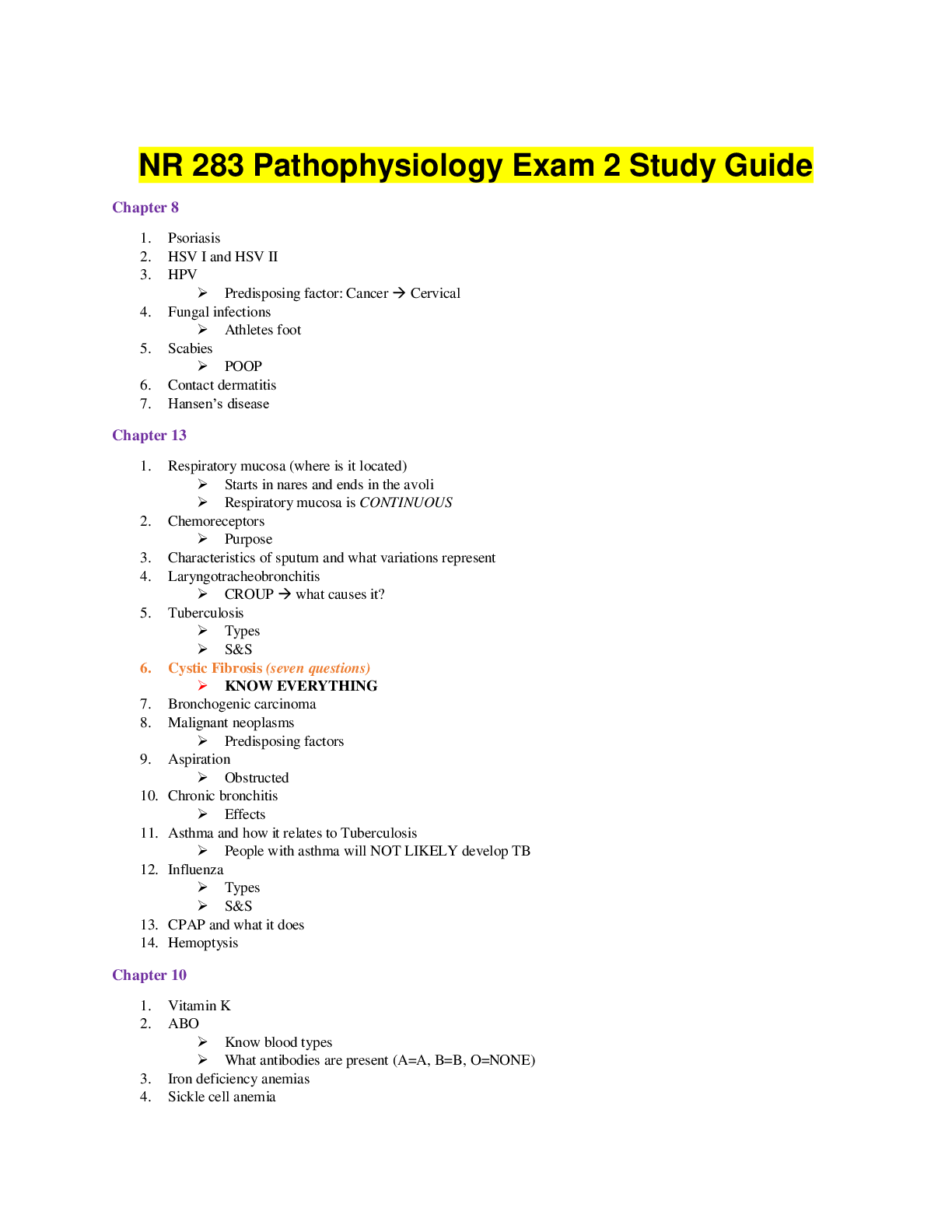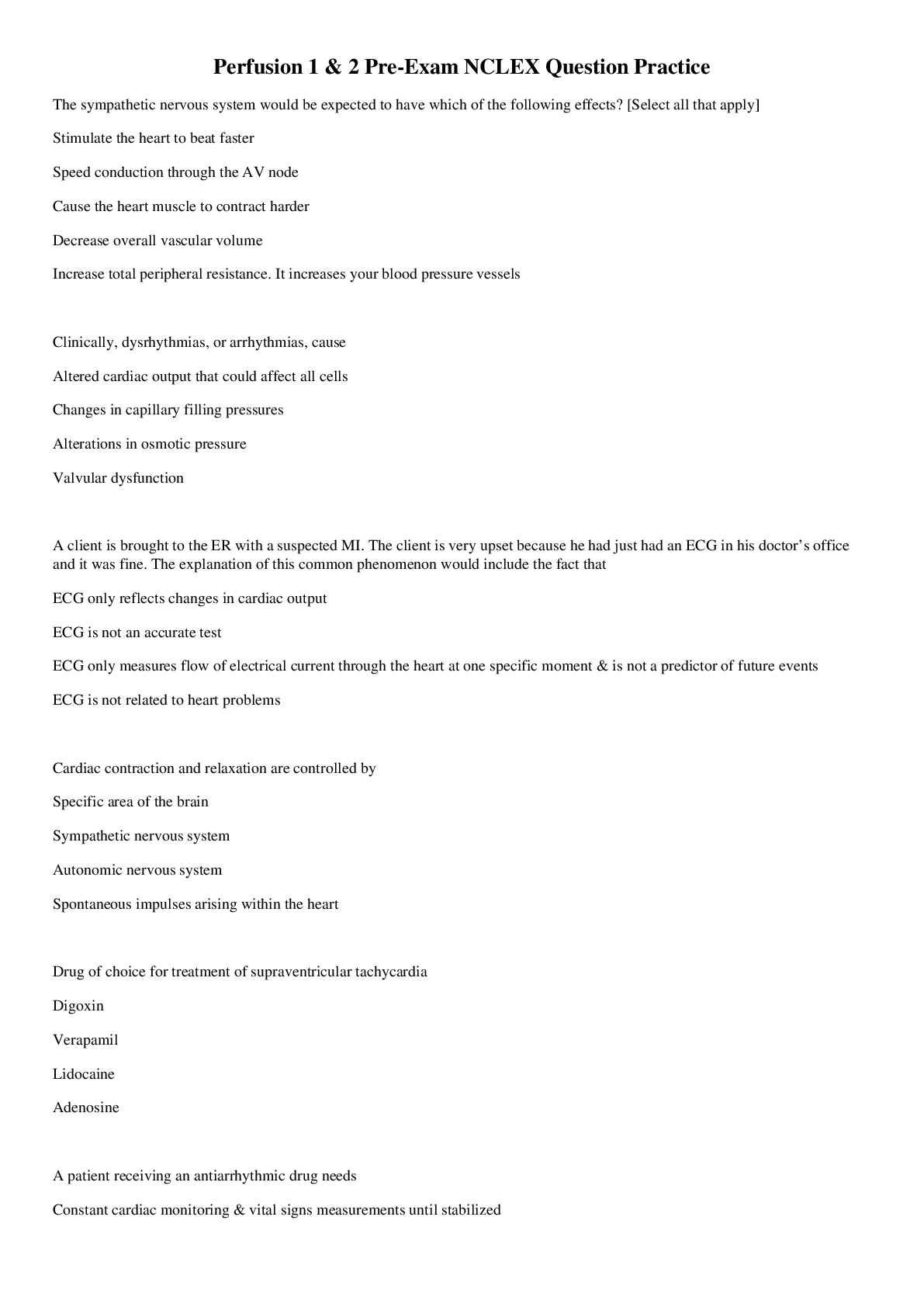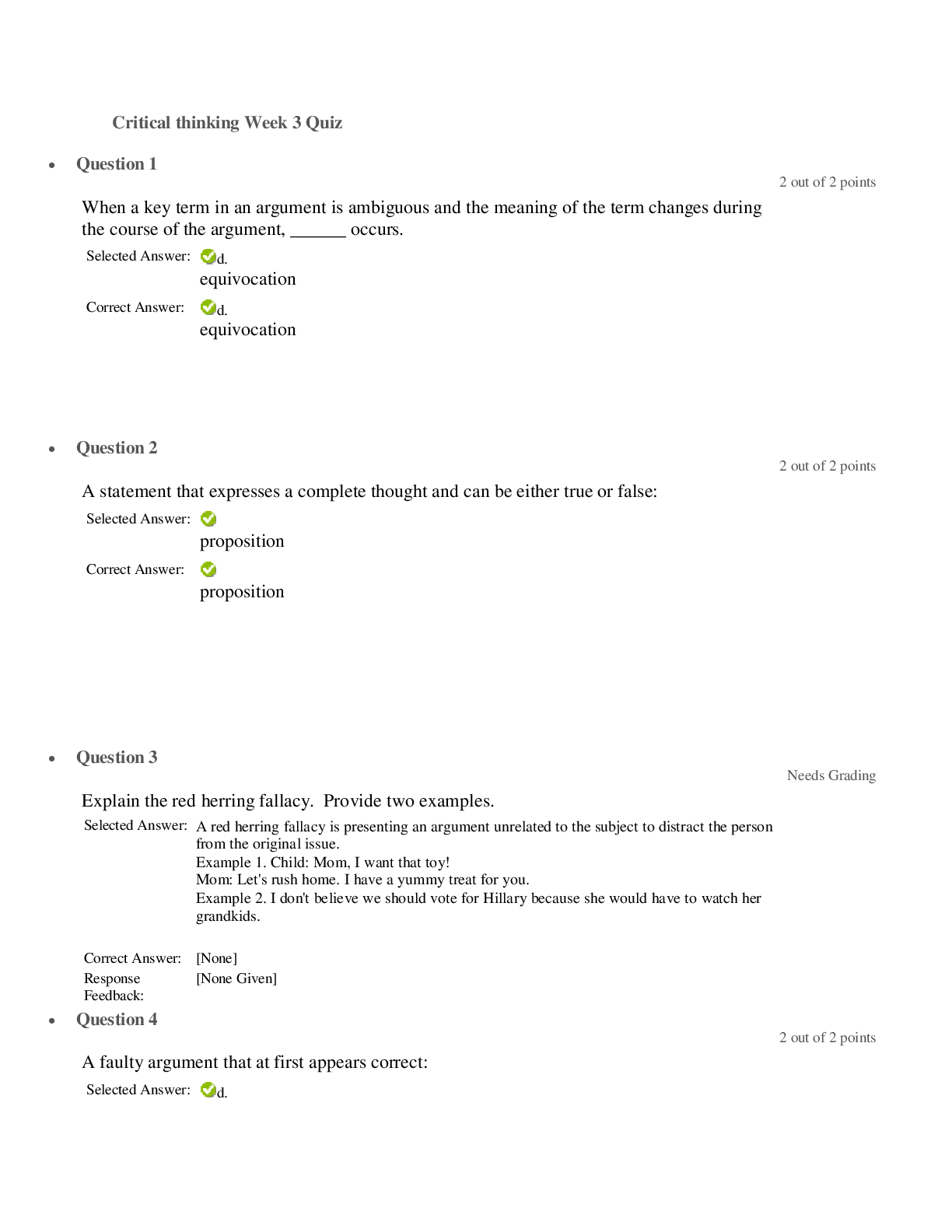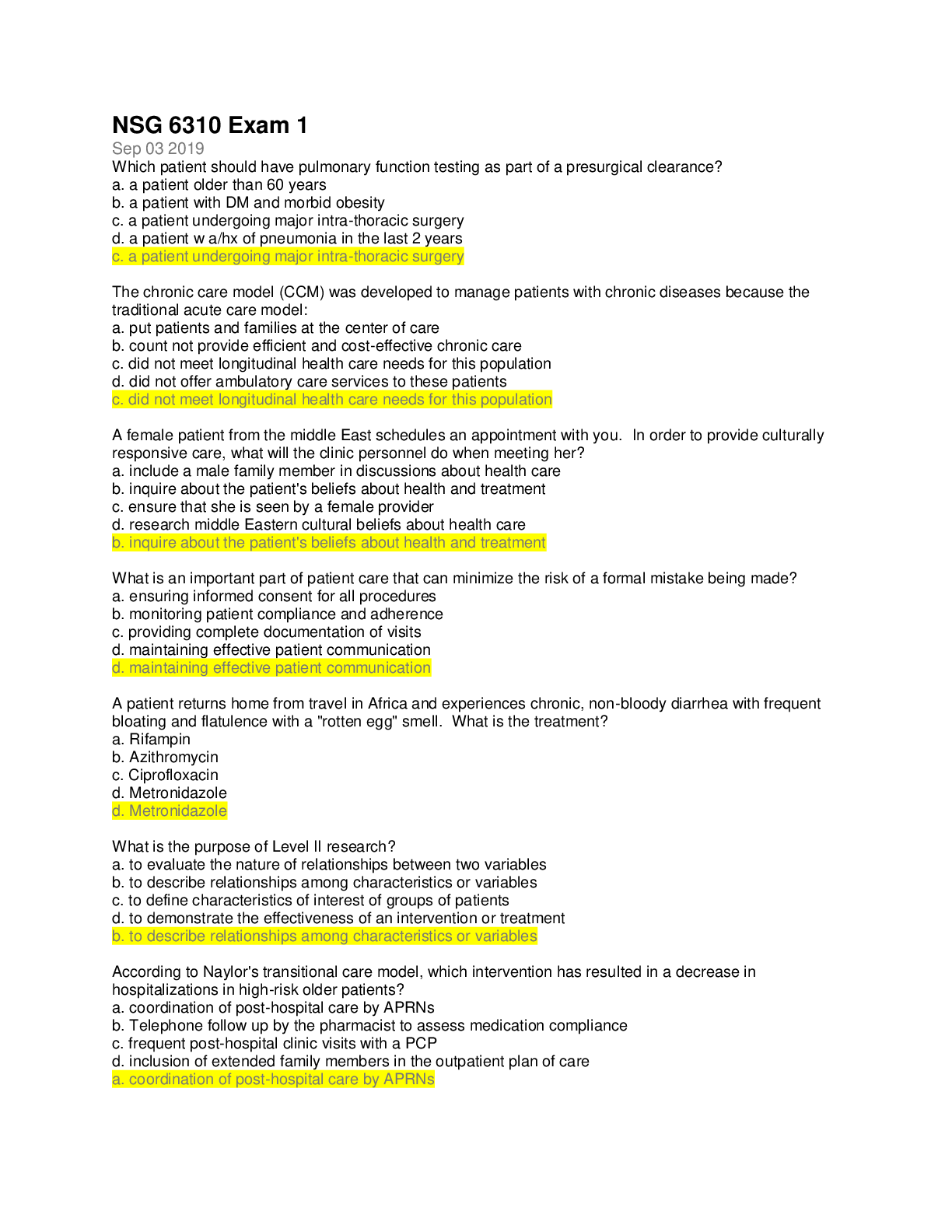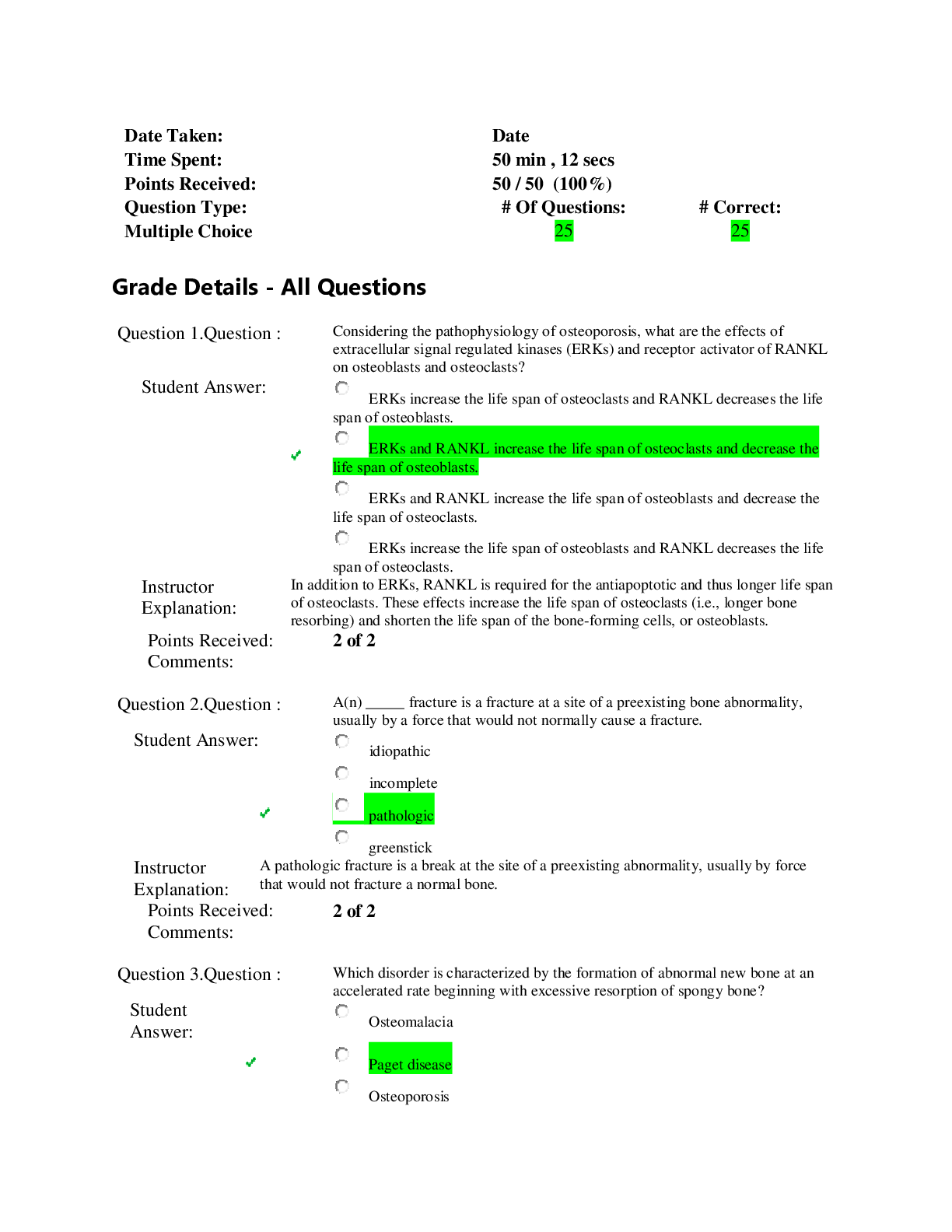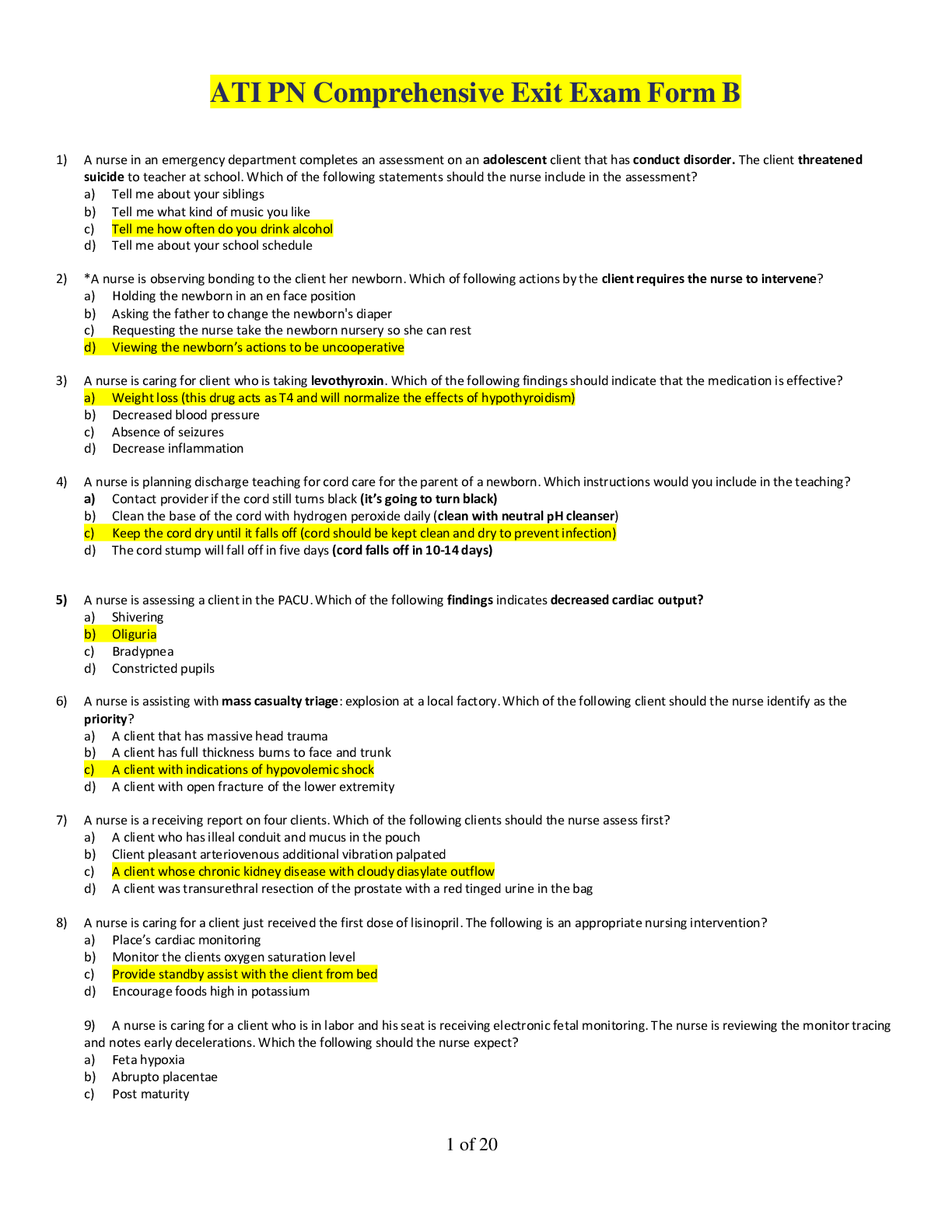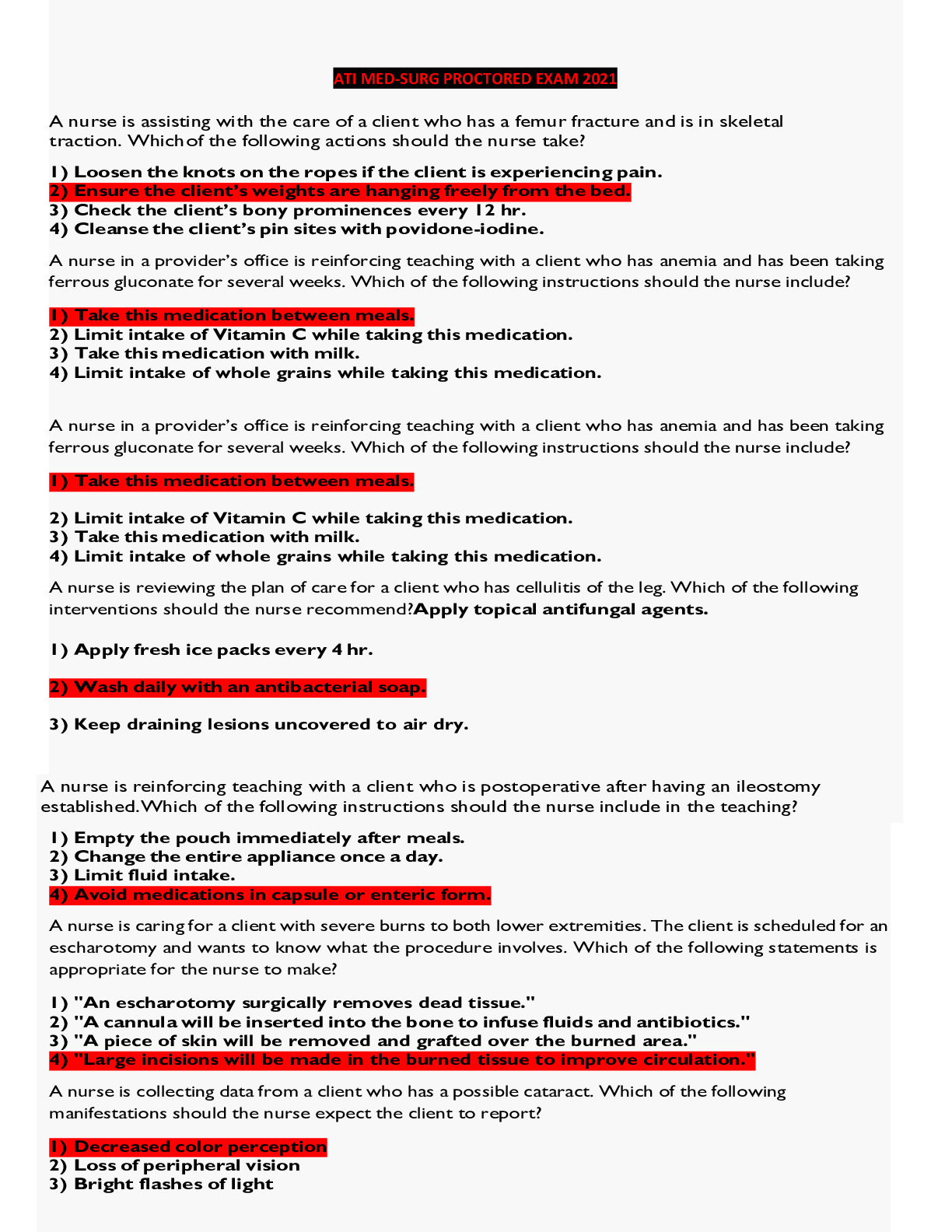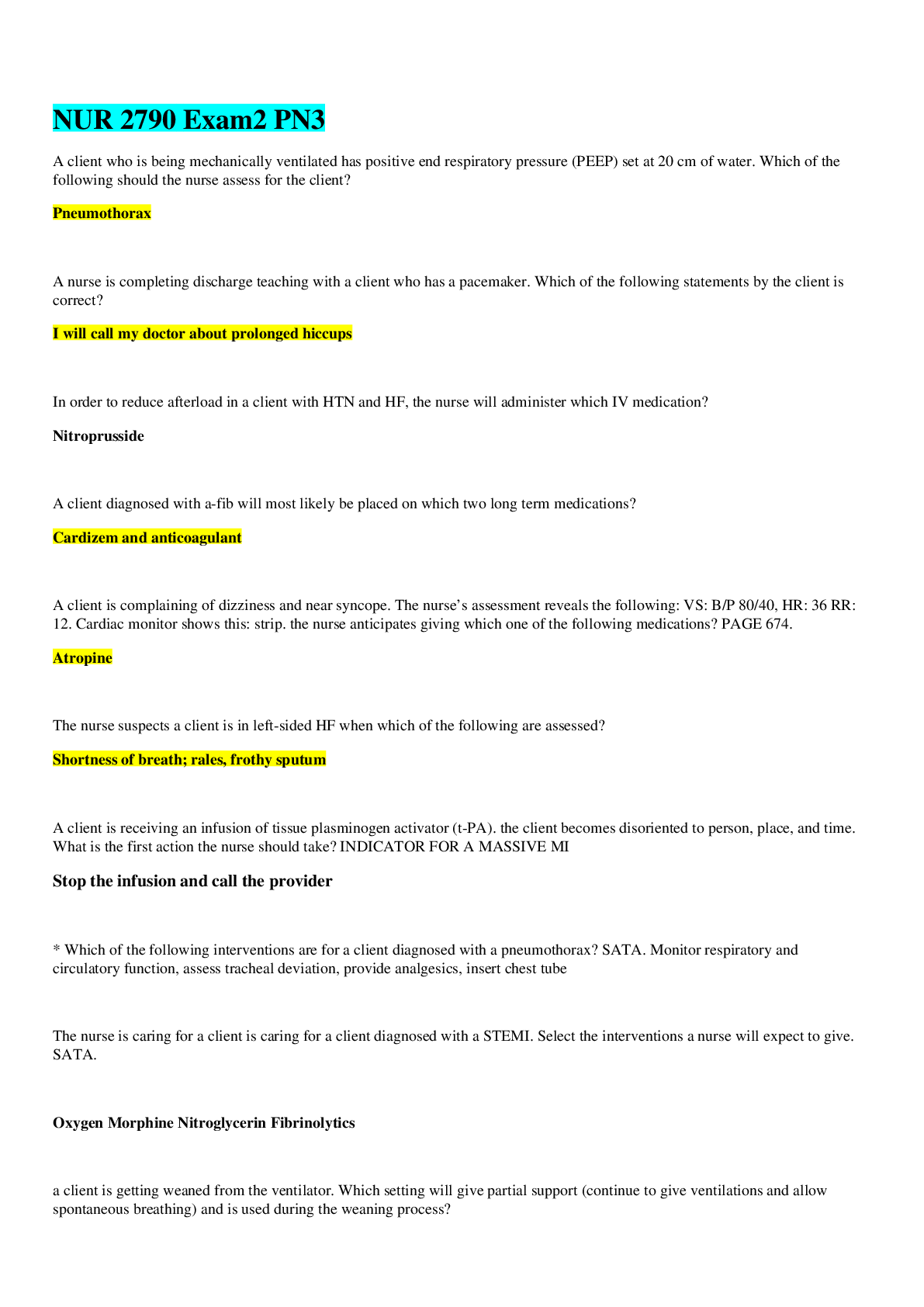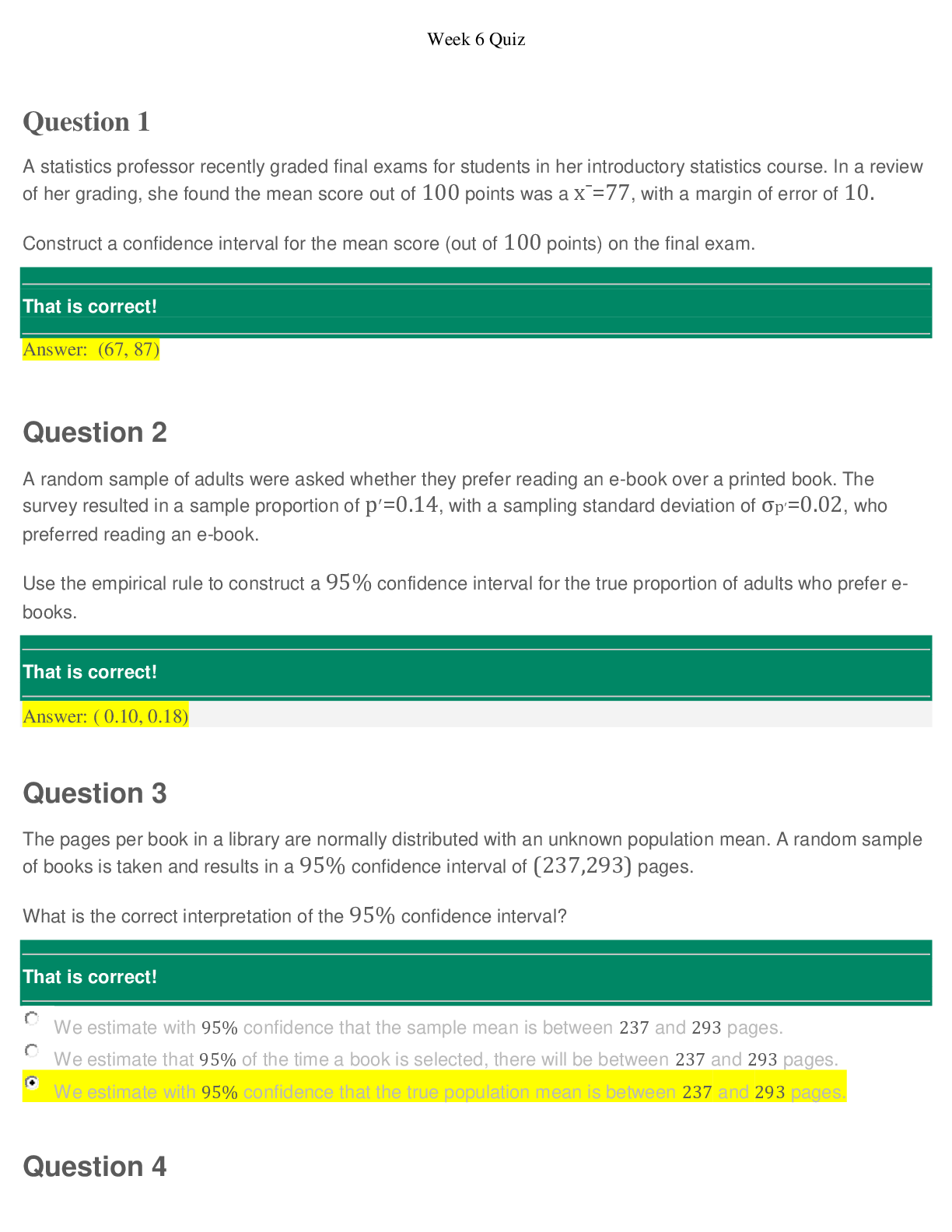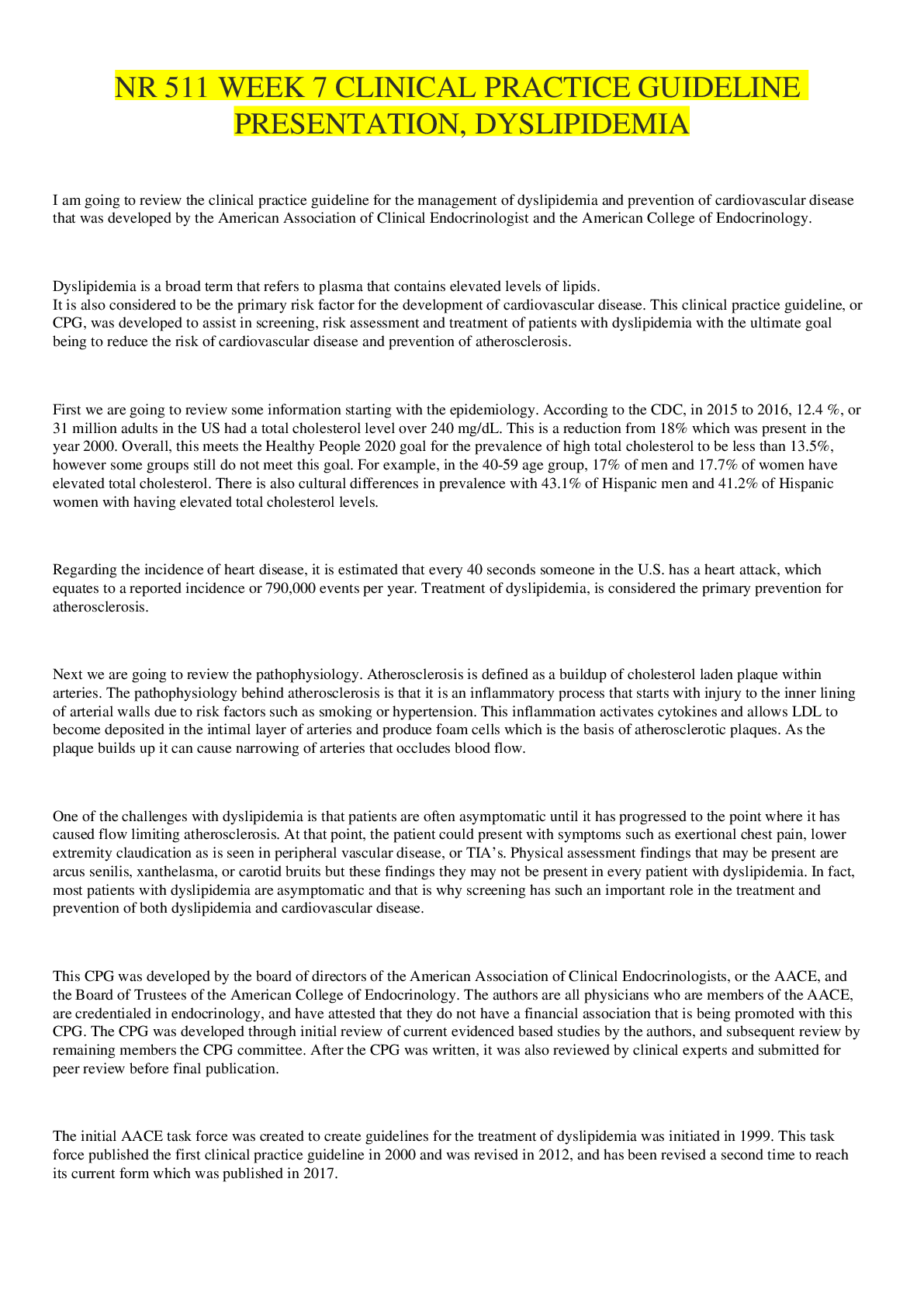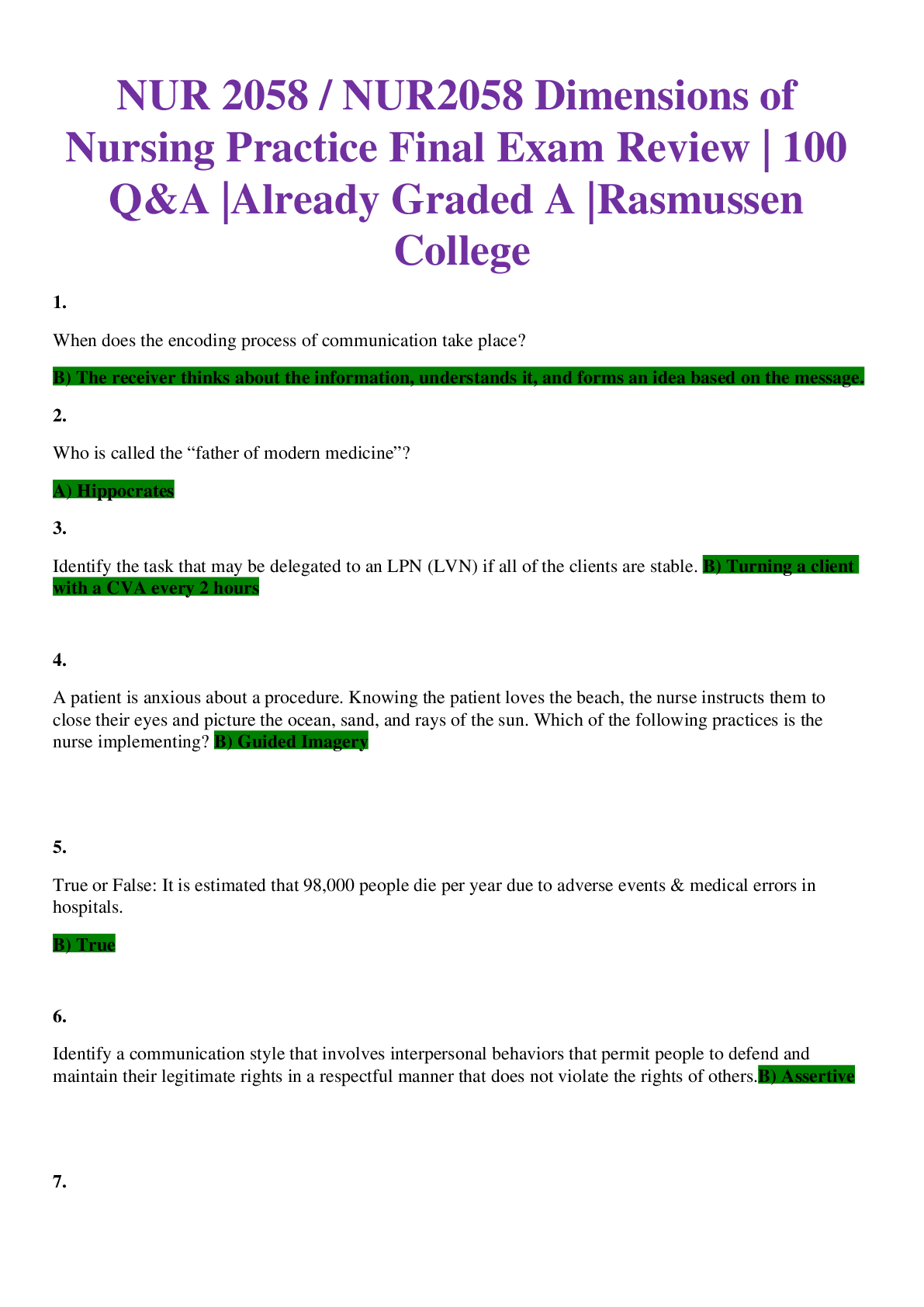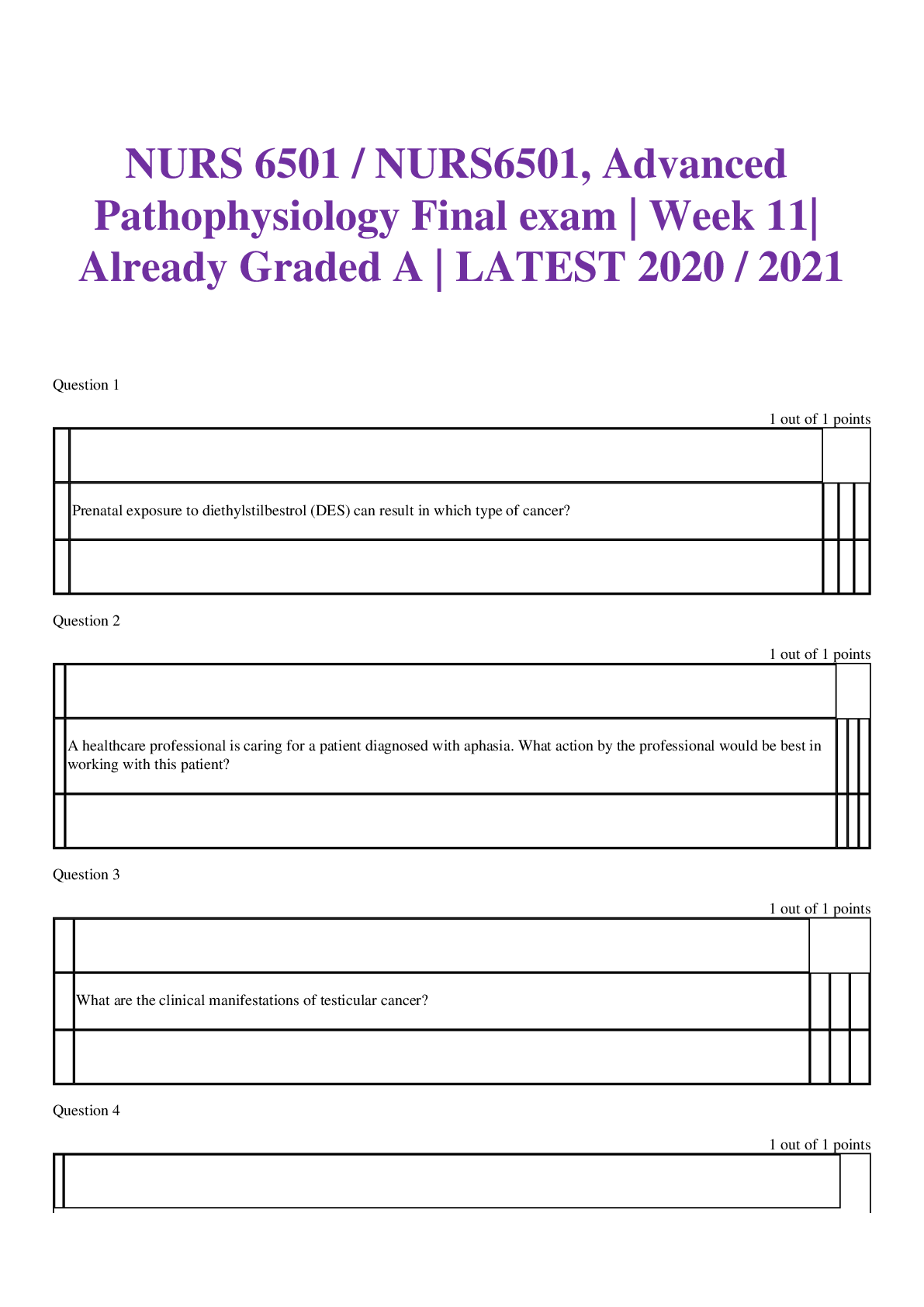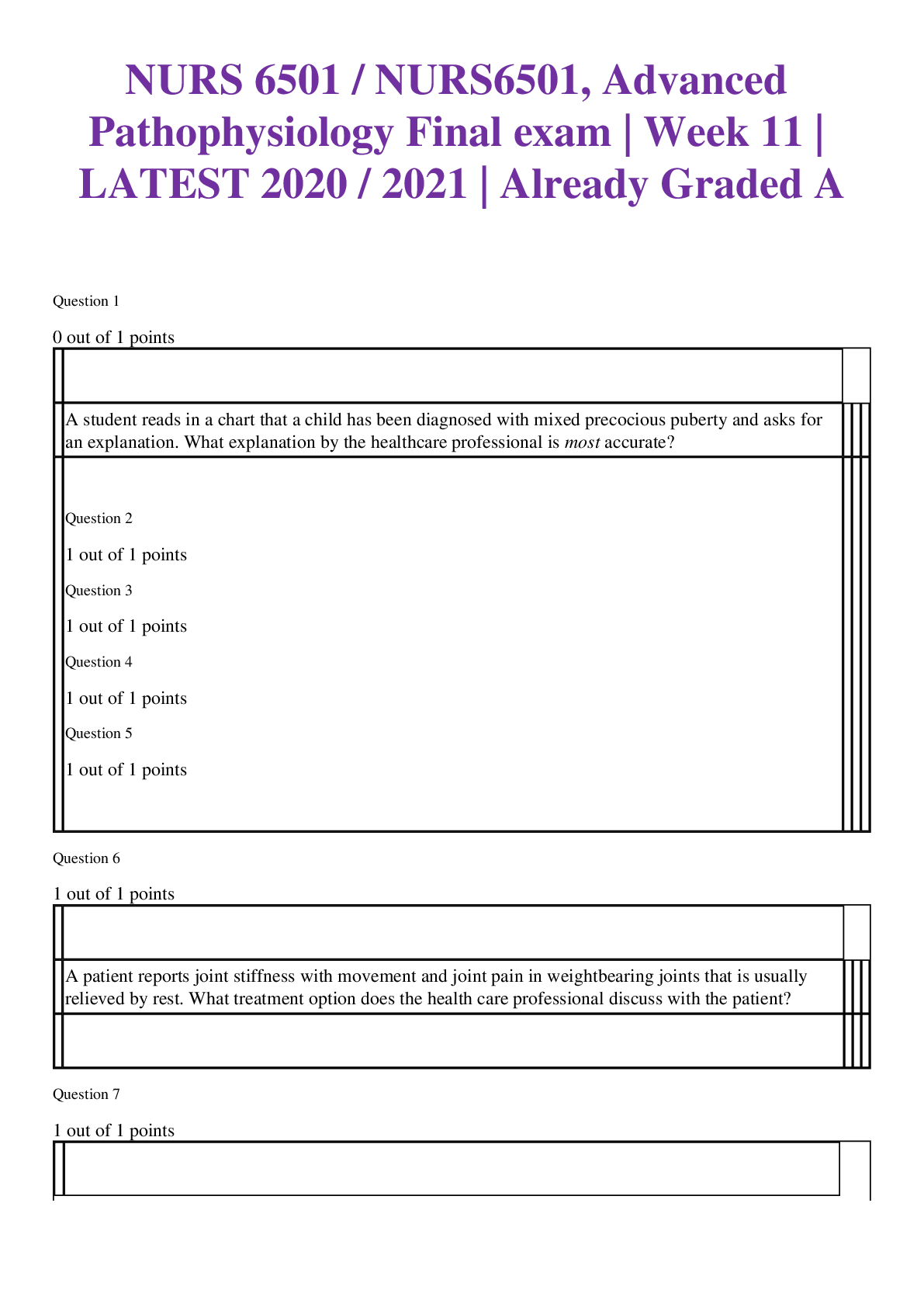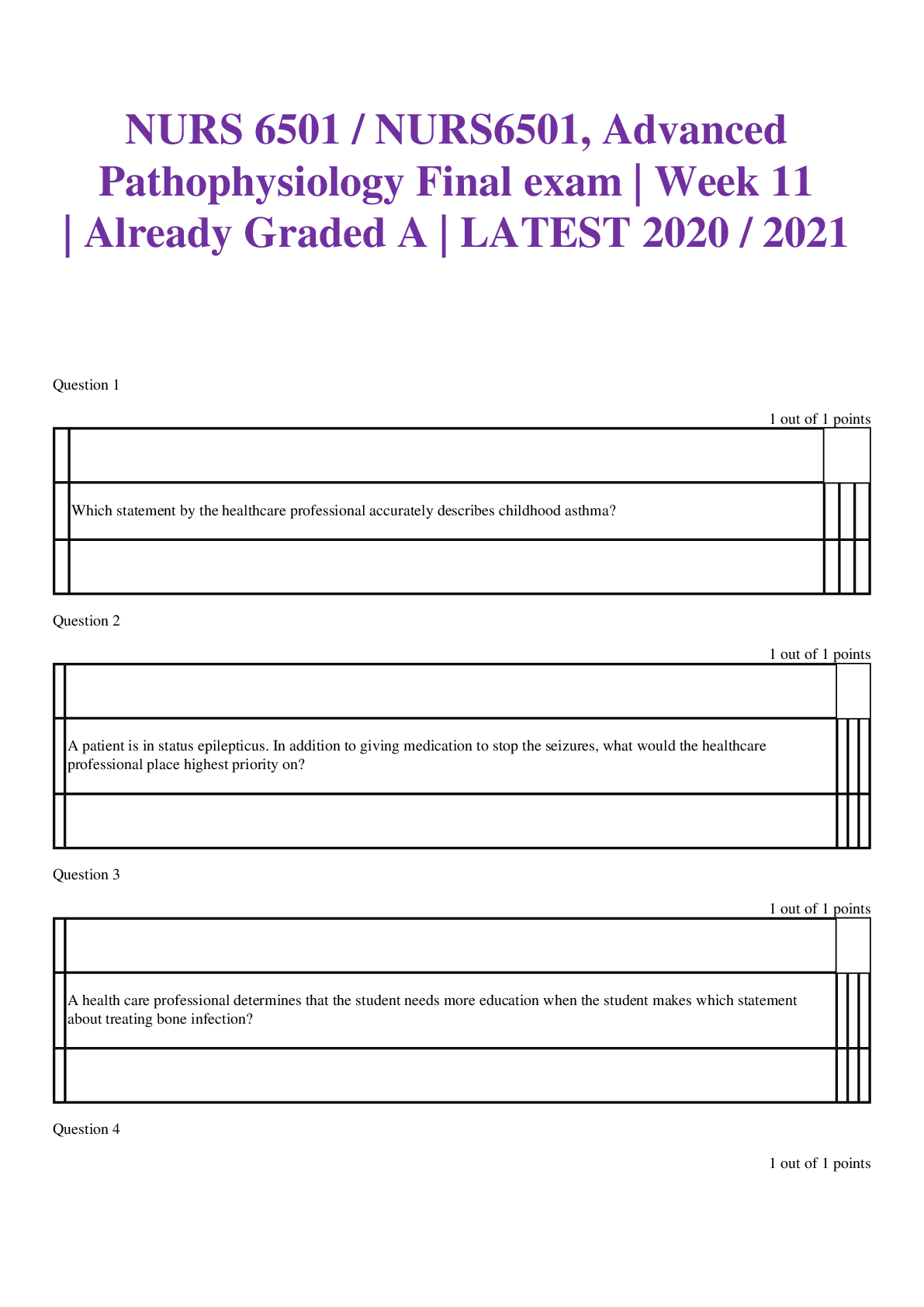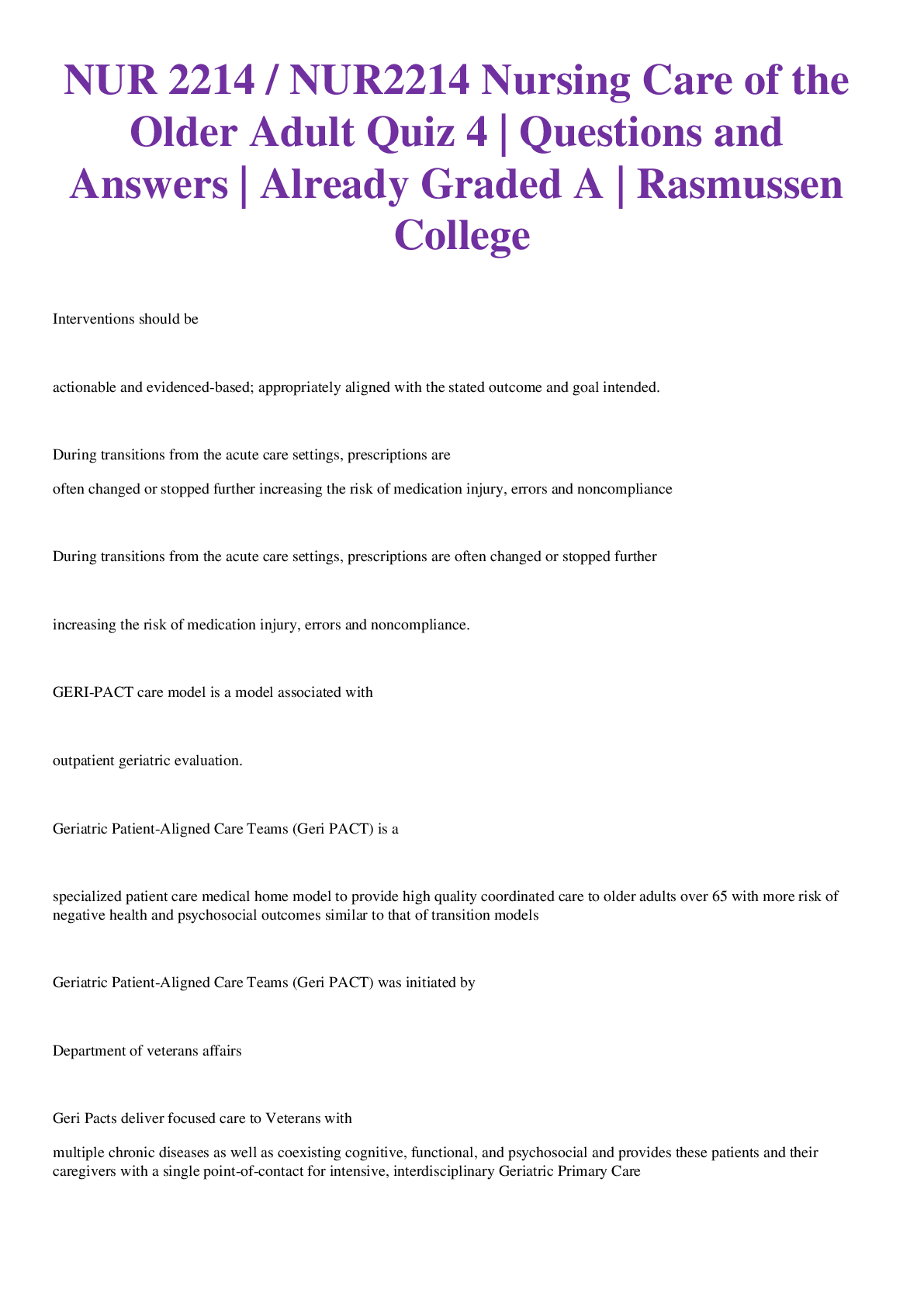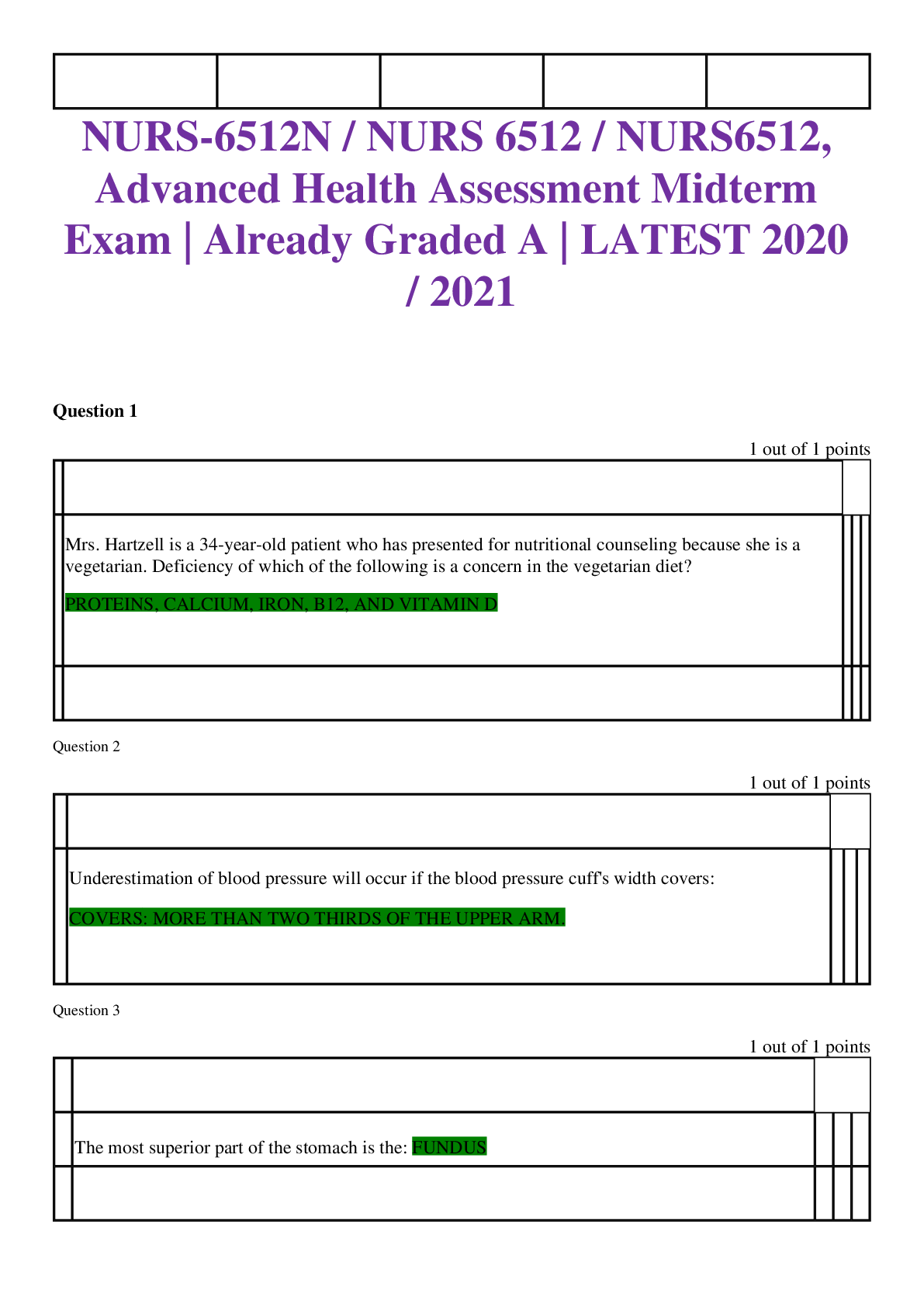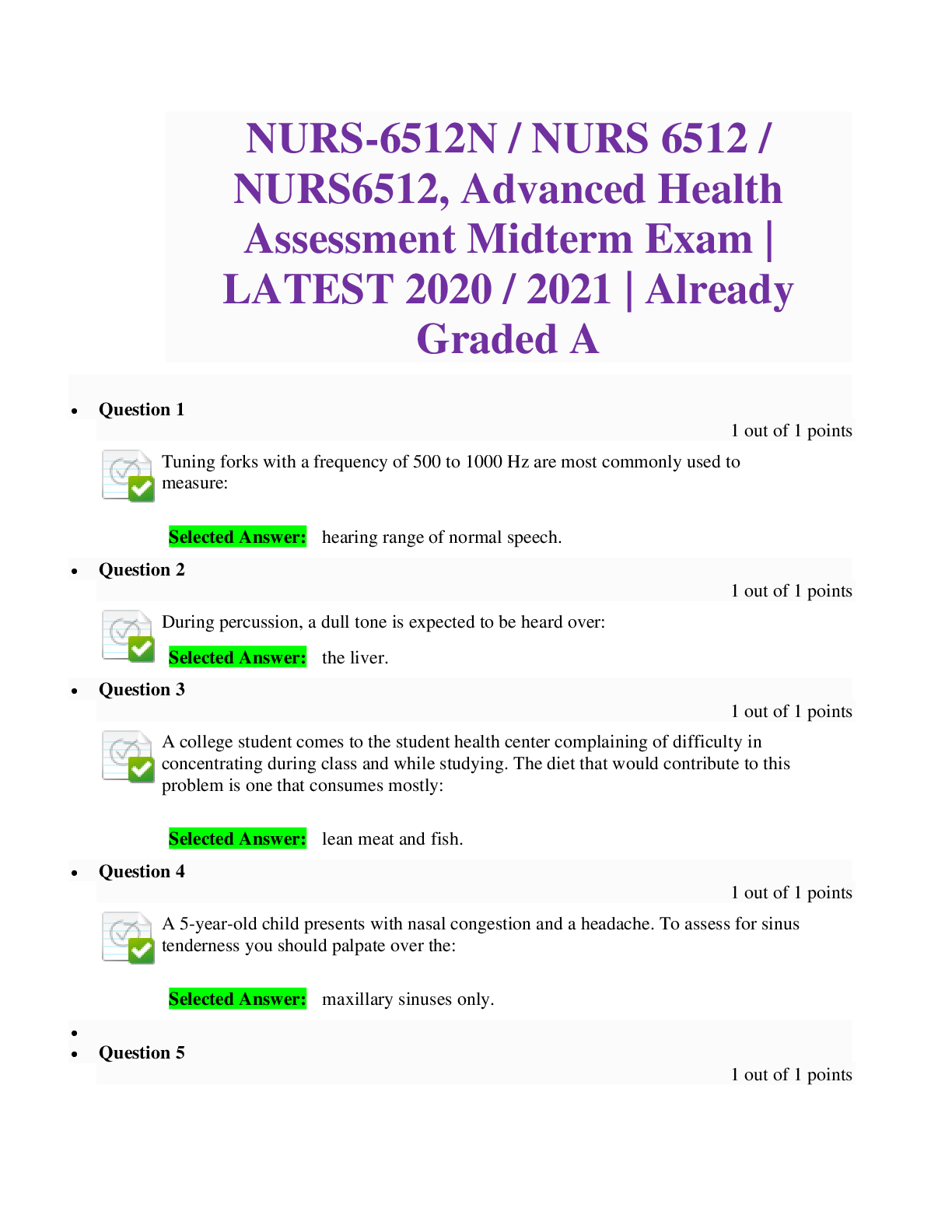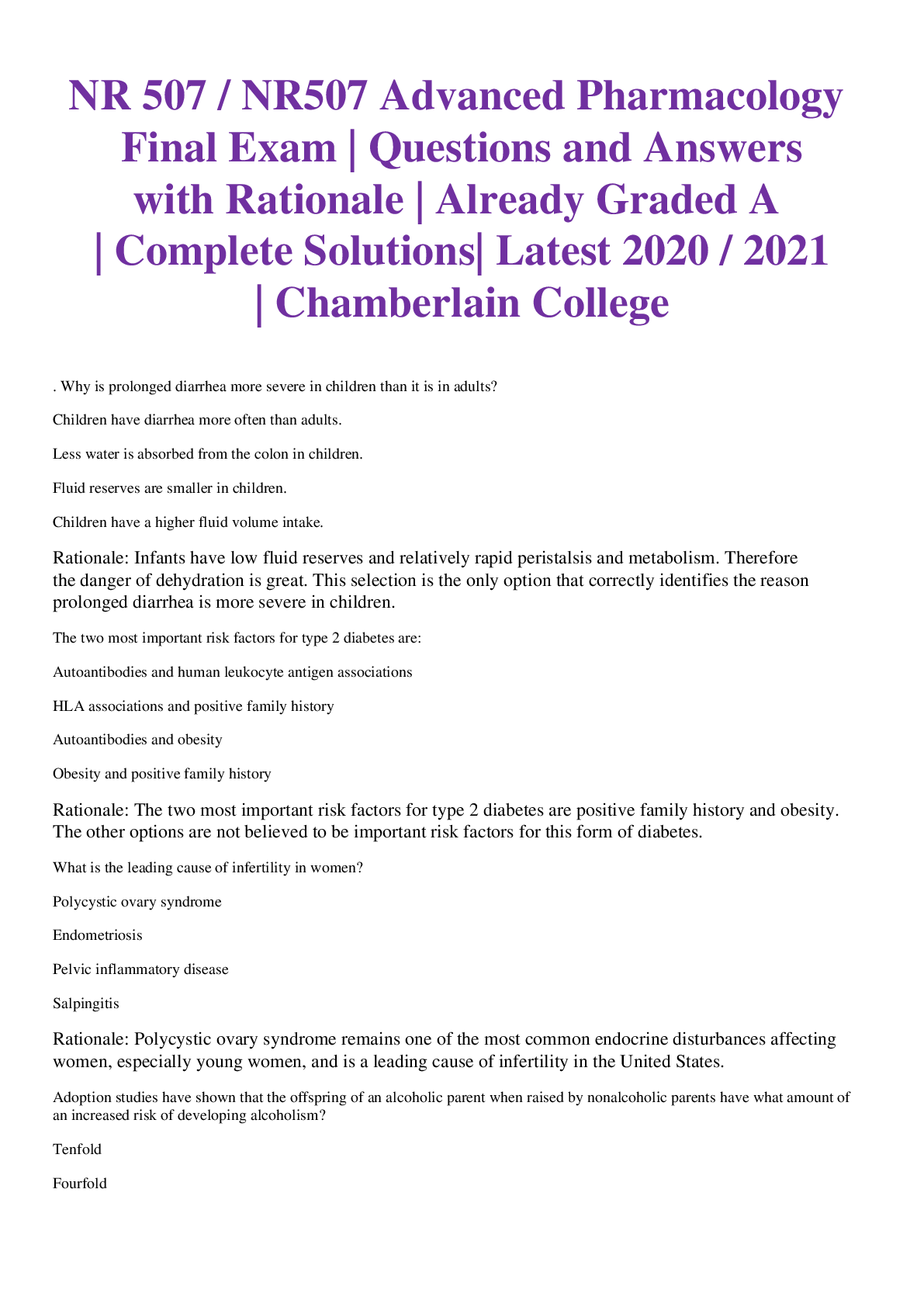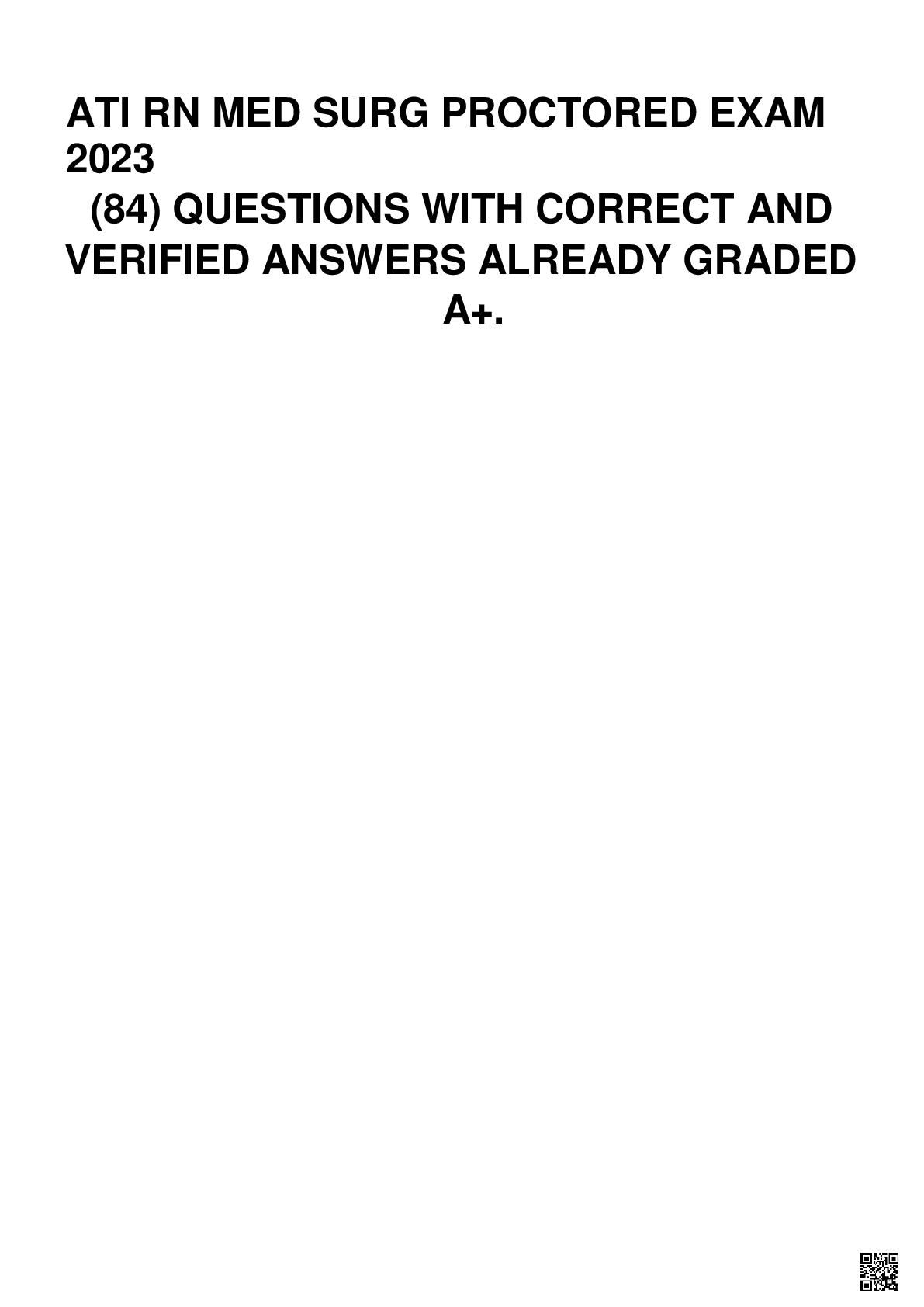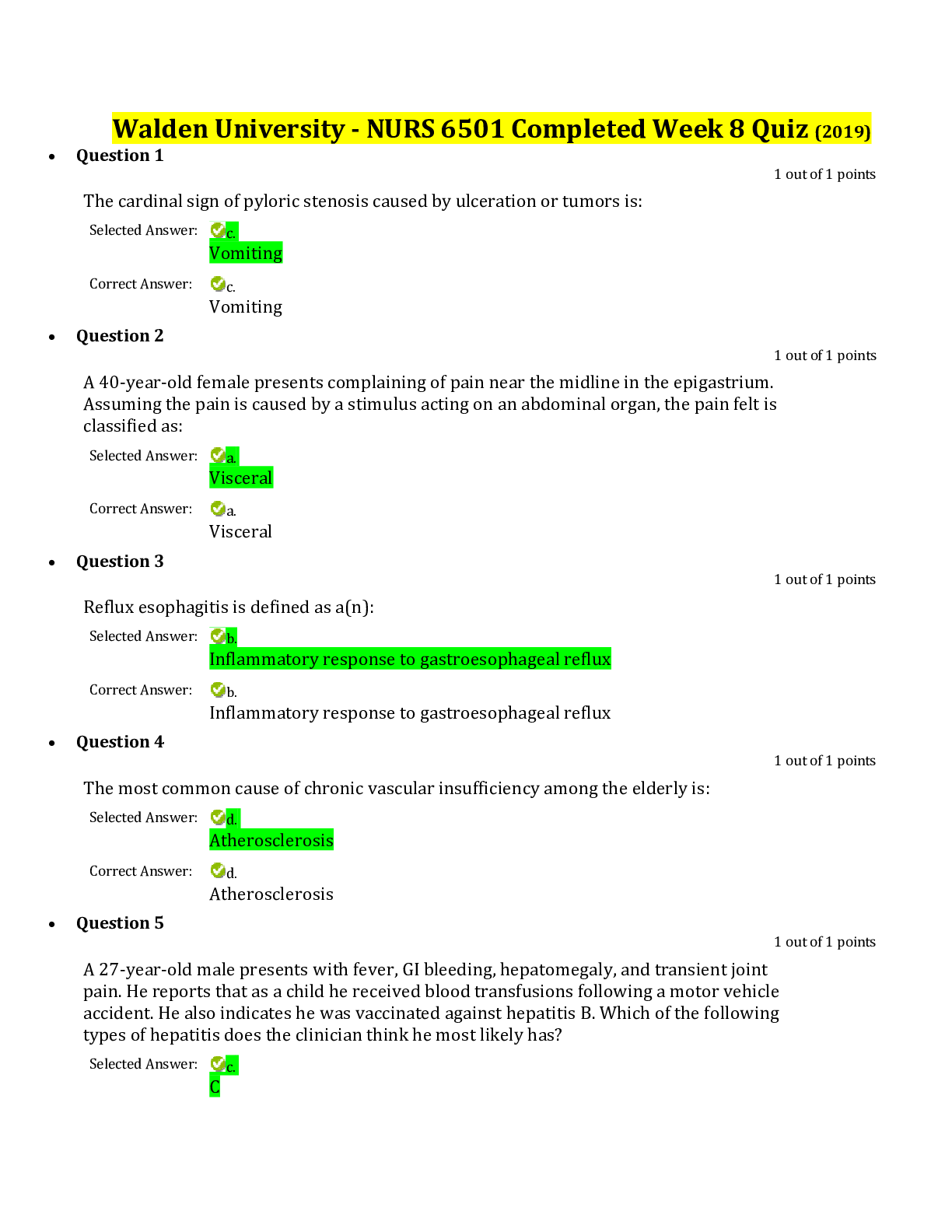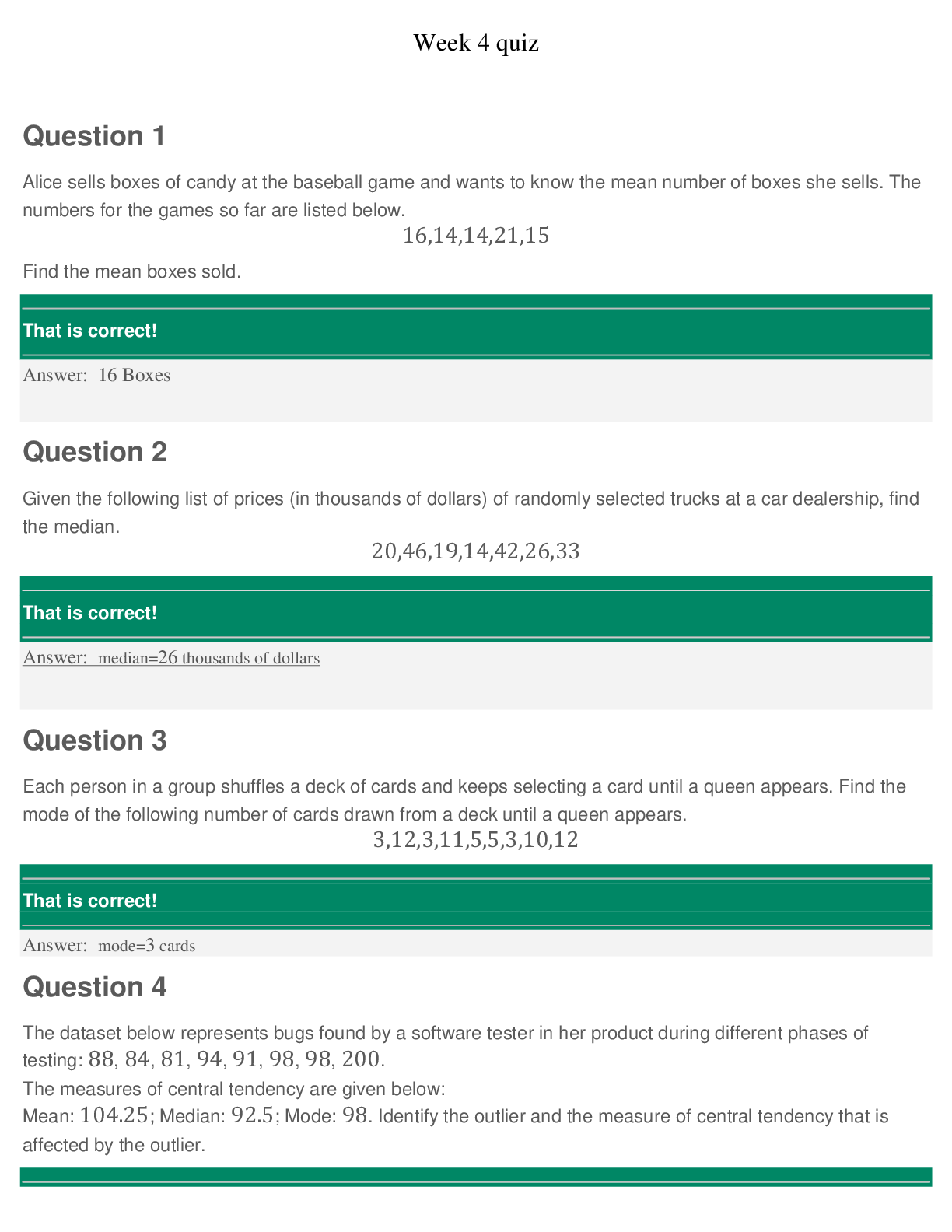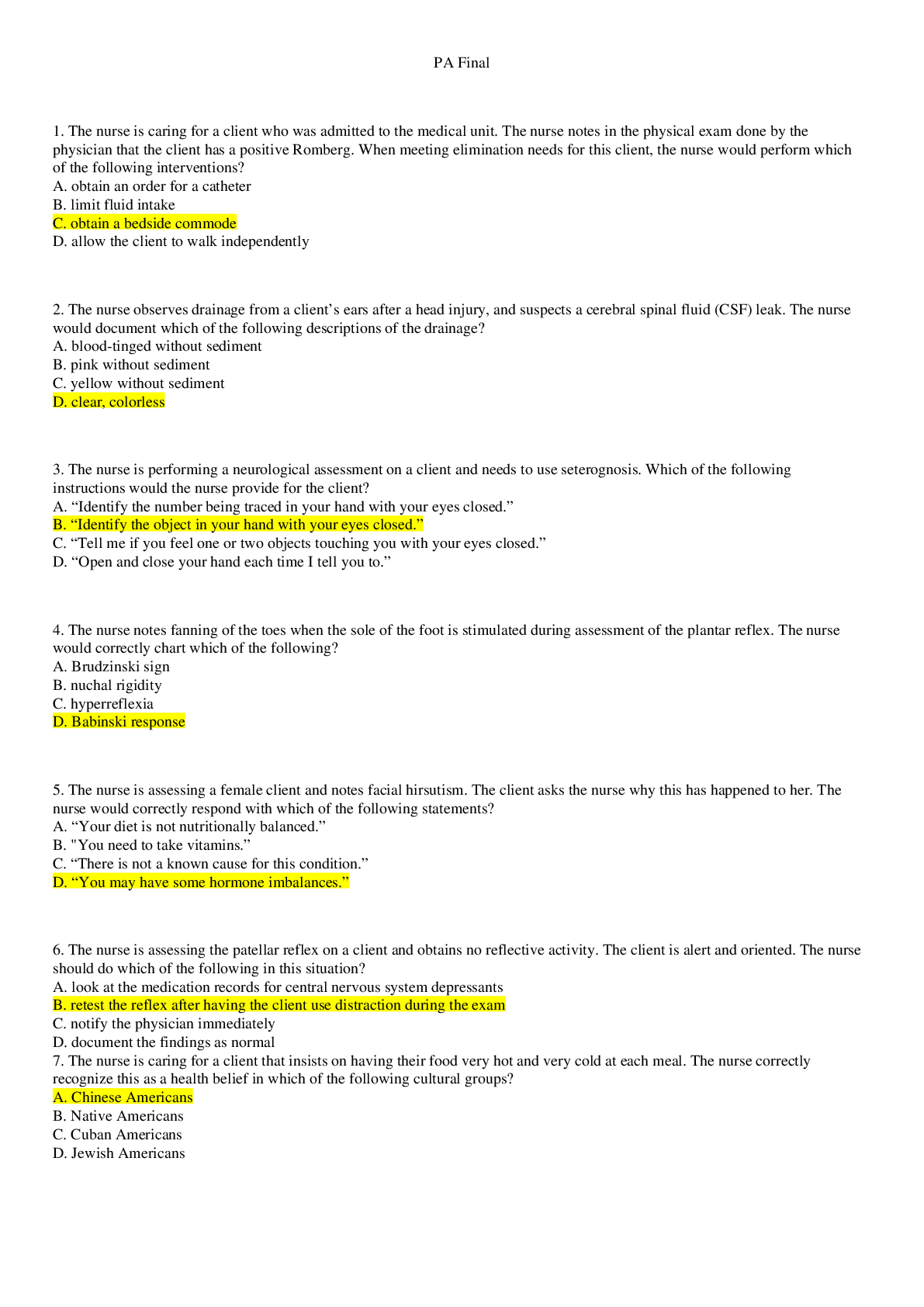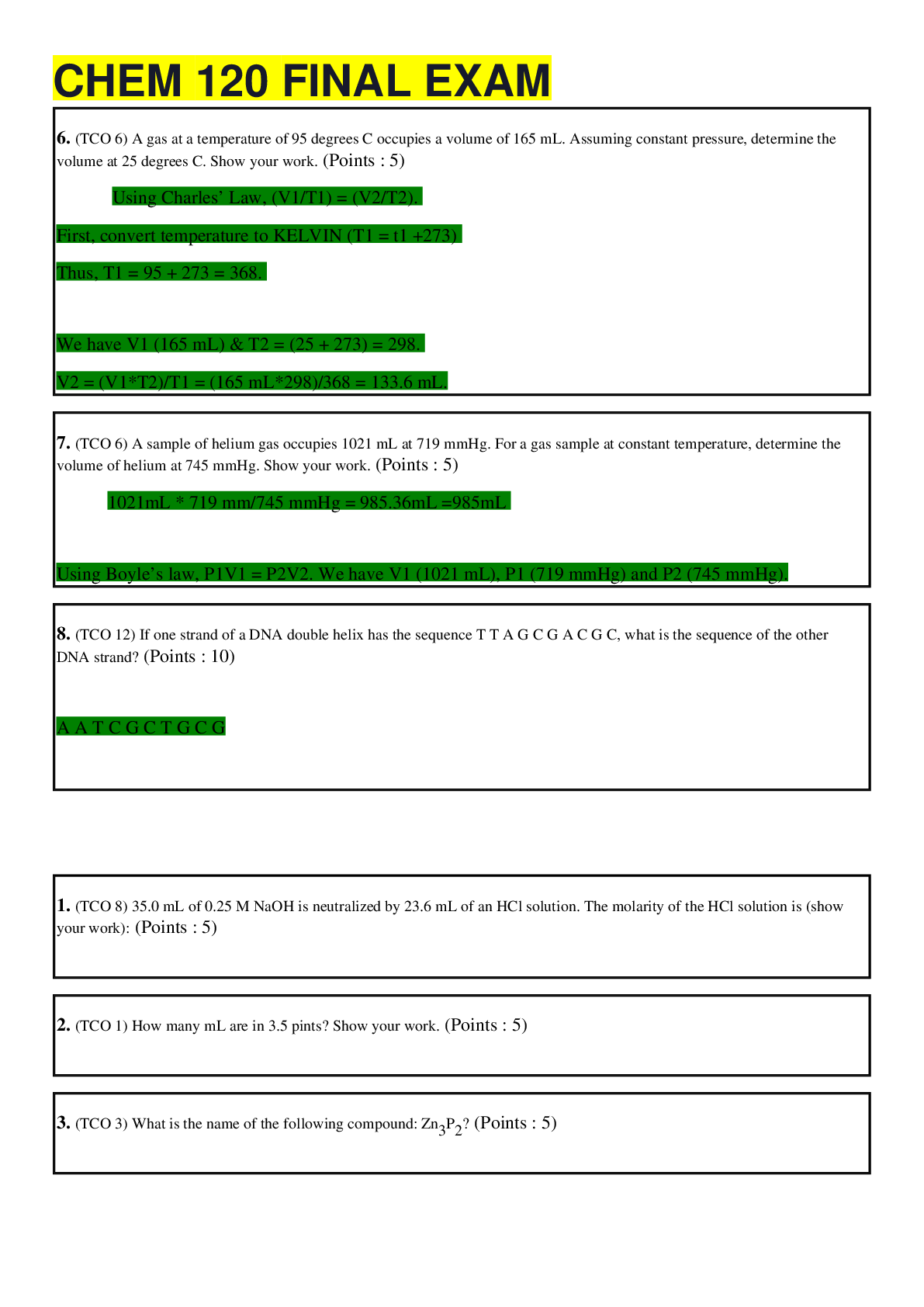*NURSING > EXAM > Chapter 39: Hyperlipidemia > NSG 6005; St. Petersburg College (2019/20) - Already Graded A (All)
Chapter 39: Hyperlipidemia > NSG 6005; St. Petersburg College (2019/20) - Already Graded A
Document Content and Description Below
Chapter 39: Hyperlipidemia Multiple Choice Identify the choice that best completes the statement or answers the question. ____ 1. The overall goal of treating hyperlipidemia is: A. Maintain an... LDL level of less than 160 mg/dL B. To reduce atherogenesis C. Lowering apo B, one of the apoliproteins D. All of the above ____ 2. When considering which cholesterol-lowering drug to prescribe which factor determines the type and intensity of treatment? A. Total LDL B. Fasting HDL C. Coronary artery disease risk level D. Fasting total cholesterol ____ 3. First-line therapy for hyperlipidemia is: A. Statins B. Niacin C. Lifestyle changes D. Bile acid-binding resins ____ 4. James is a 45 year old with an LDL level of 120 and normal triglycerides. Appropriate first- line therapy for James may include diet counseling, increased physical activity, and: A. A statin B. Niacin C. Sterols D. A fibric acid derivative ____ 5. Joanne is a 60 year old with an LDL of 132 and a family history of coronary artery disease. She has already tried diet changes (increased fiber and plant sterols) to lower her LDL and after 6 months her LDL is slightly higher. The next step in her treatment would be: A. A statin B. Niacin C. Sterols D. A fibric acid derivative ____ 6. Sharlene is a 65 year old who has been on a lipid-lowering diet and using plant sterol margarine daily for the past 3 months. Her LDL is 135 mg/dL. An appropriate treatment for her would be: A. A statin B. Niacin C. A fibric acid derivative D. Determined by her risk factors ____ 7. Mike is a 47 year old who has been on standard dose atorvastatin for 3 months and his repeat LDL is 124 mg/dL. He is a smoker and has a strong family history of cardiovascular disease. His treatment plan would include reinforcing diet, exercise, plant sterol intake, and: A. Increasing his dose of atorvastatin B. Changing to another statin C. Adding niacin to the treatment regimen D. Adding a bile acid-binding resin ____ 8. Phil is a 54-year-old male with multiple risk factors who has been on a high dose statin for 3 months to treat his high LDL level. His LDL is 135 mg/dL and his triglycerides are elevated. A reasonable change in therapy would be to: A. Discontinue the statin and change to a fibric acid derivative B. Discontinue the statin and change to ezetimibe C. Continue the statin and add in ezetimibe D. Refer him to a specialist in managing patients with recalcitrant hyperlipidemia ____ 9. Scott is presenting for follow up on his lipid panel. He had elevated total cholesterol, triglycerides, and an LDL of 122 mg/dL. He has already implemented diet changes and increased physical activity. He has mildly elevated liver studies. An appropriate next step for therapy would be: A. Atorvastatin (Lipitor) B. Niacin (Niaspan) C. Simvastatin and ezetimibe (Vytorin) D. Gemfibrozil (Lopid) ____ 10. Jamie is a 34-year-old pregnant woman with familial hyperlipidemia and elevated LDL levels. What is the appropriate treatment for a pregnant woman? A. A statin B. Niacin C. Fibric acid derivative D. Bile acid-binding resins ____ 11. Han is a 48-year-old diabetic with hyperlipidemia and high triglycerides. His LDL is 112 mg/dL and he has not tolerated statins. He warrants a trial of a: A. Sterol B. Niacin C. Fibric acid derivative D. Bile acid-binding resin ____ 12. Jose is a 12-year-old overweight child with a total cholesterol of 180 mg/dL and LDL of 125 mg/dL. Along with diet education and recommending increased physical activity, a treatment plan for Jose would include ____ with a reevaluation in 6 months. A. Statins B. Niacin C. Sterols D. Bile acid-binding resins ____ 13. Monitoring of a patient who is on a lipid-lowering drug includes: A. Fasting total cholesterol every 6 months B. Lipid profile with attention to serum LDL 6 to 8 weeks after starting therapy then again in 6 weeks C. Complete blood count, CRP, and ESR after 6 weeks of therapy D. All of the above ____ 14. Before starting therapy with a statin, the following baseline laboratory values should be evaluated: A. Complete blood count B. Liver function (ALT/AST) and CK C. C-reactive protein D. All of the above ____ 15. When starting a patient on a statin, education would include: A. If they stop the medication their lipid levels will return to pre-treatment levels B. Medication is a supplement to diet therapy and exercise C. If they have any muscle aches or pain, they should contact their provider D. All of the above Chapter 39: Hyperlipidemia Answer Section [Show More]
Last updated: 1 year ago
Preview 1 out of 4 pages
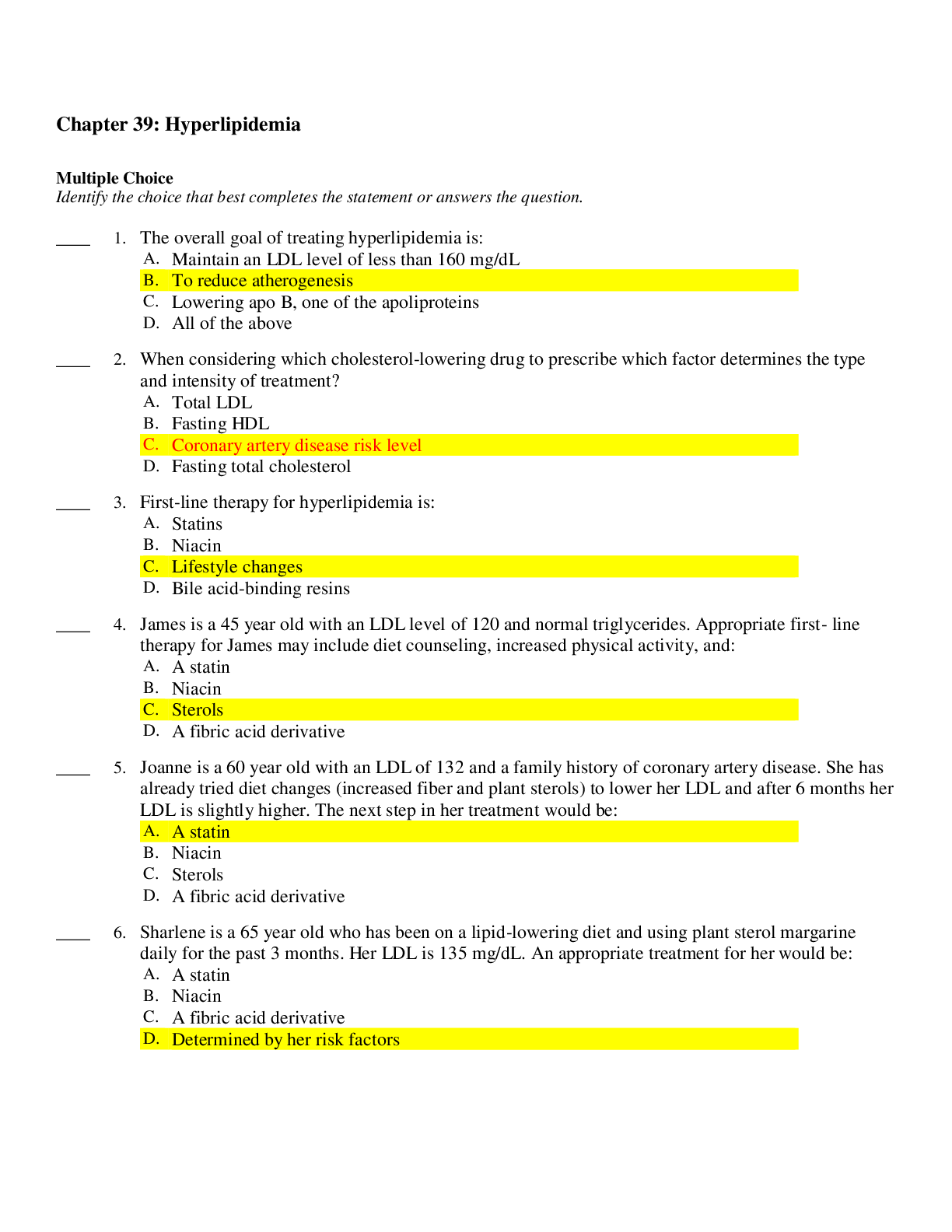
Reviews( 0 )
Document information
Connected school, study & course
About the document
Uploaded On
Oct 12, 2019
Number of pages
4
Written in
Additional information
This document has been written for:
Uploaded
Oct 12, 2019
Downloads
0
Views
67

